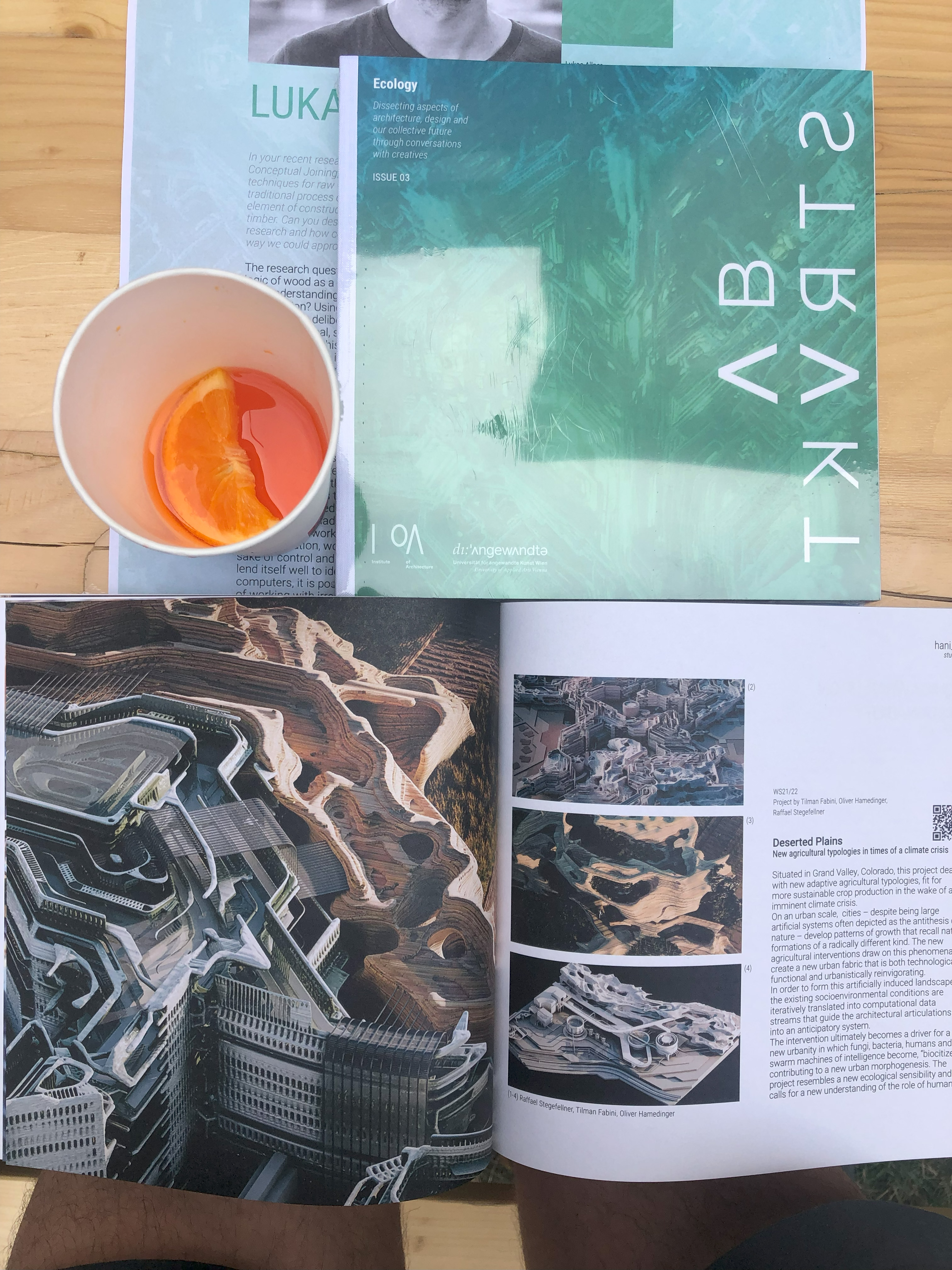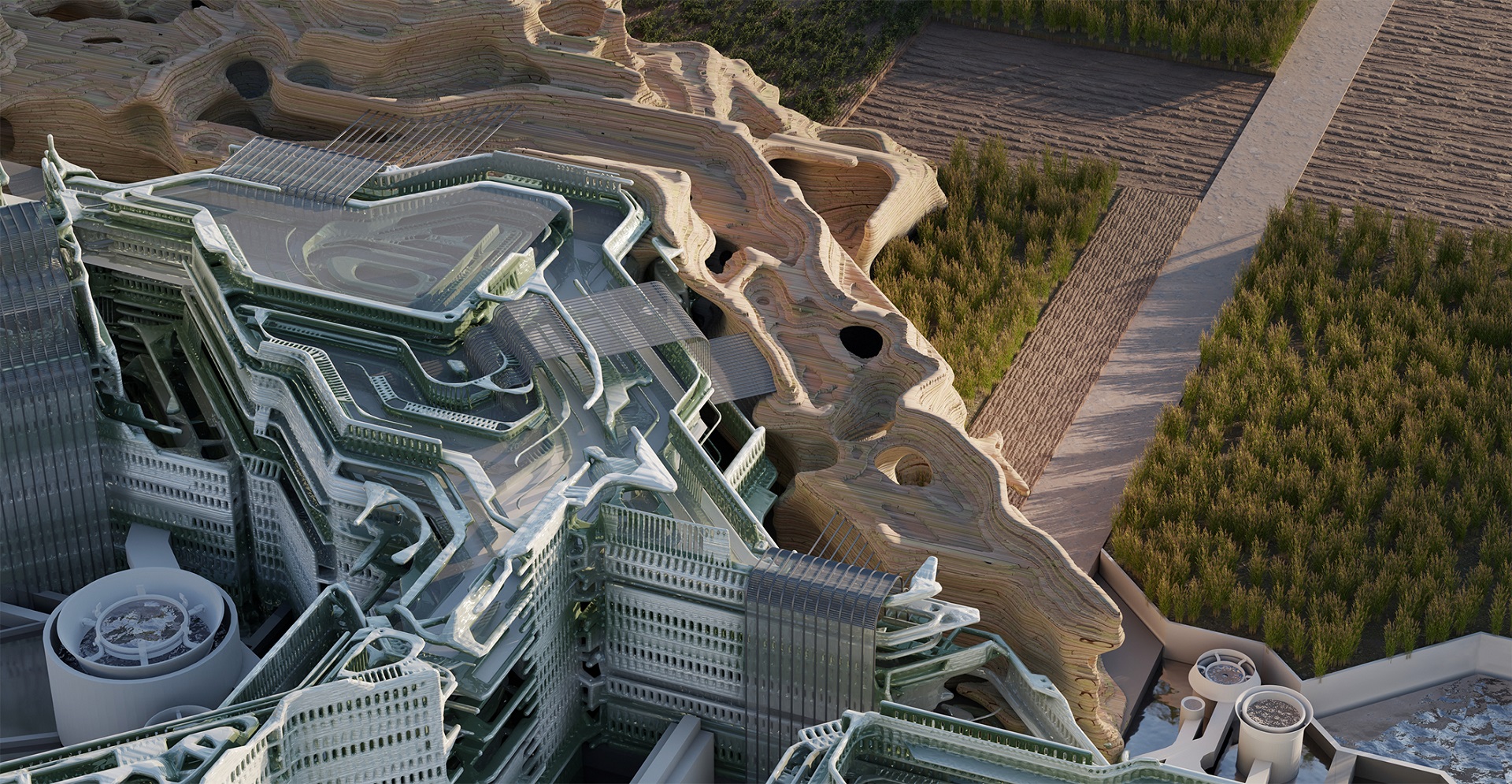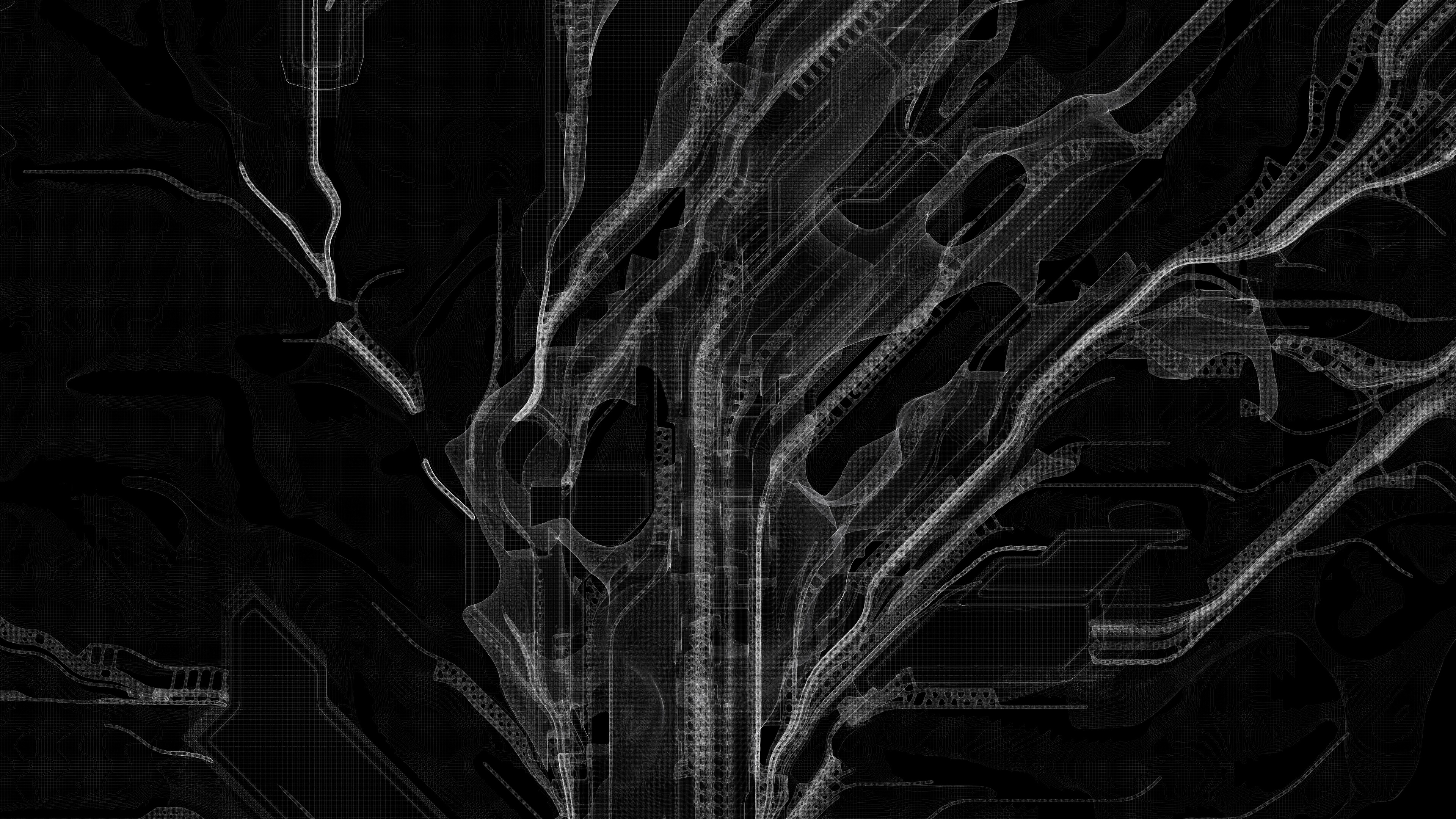Deserted Plains
agricultural typologies in times of climate crisis
Academic
with Raffael Stegfellner, Oliver Hamedinger
with Raffael Stegfellner, Oliver Hamedinger
published in “Re:Action” (book, Birkhäuser, 2024)
exhibitet at “IOA Sliver Gallery: Research Cultures”, 2022
published on Dezeen, 2022
published in “ABSTRKT issue #3”, 2022
exhibitet at “IOA Sliver Gallery: Research Cultures”, 2022
published on Dezeen, 2022
published in “ABSTRKT issue #3”, 2022
Situated in Grand Valley, Colorado, the project deals with new adaptive agriculture typologies, fit for more sustainable crop production in the wake of an imminent climate crisis. Instead of a solely extractive practice, circular startegies are developed providing benefits for the environment, local production and natural agents.
Turning commodities into assets, agricultural waste is recycled and formed into mycelium structures, acting as the backbone for a rewilding- and regeneration process.
Creating a new fabric that is both technologically functional and environmentally reinvigorating, the project reflects on the possible overlap in natural and man-made systems, advocating for hybrid programme and decentralized coexistence.
The intervention ultimately becomes a driver for an urbanity in which funghi, bacteria, humans and swarm machines of intelligence become “bio-citizens” contributing to a new morphogenesis. The project resembles a new ecological sensibility and calls for a different understanding of the role of humanity which – supported by artificial and biological helpers – has to reconsider its relationship with nature in order to accomplish the challenges of the future restoring malpractices of the past.
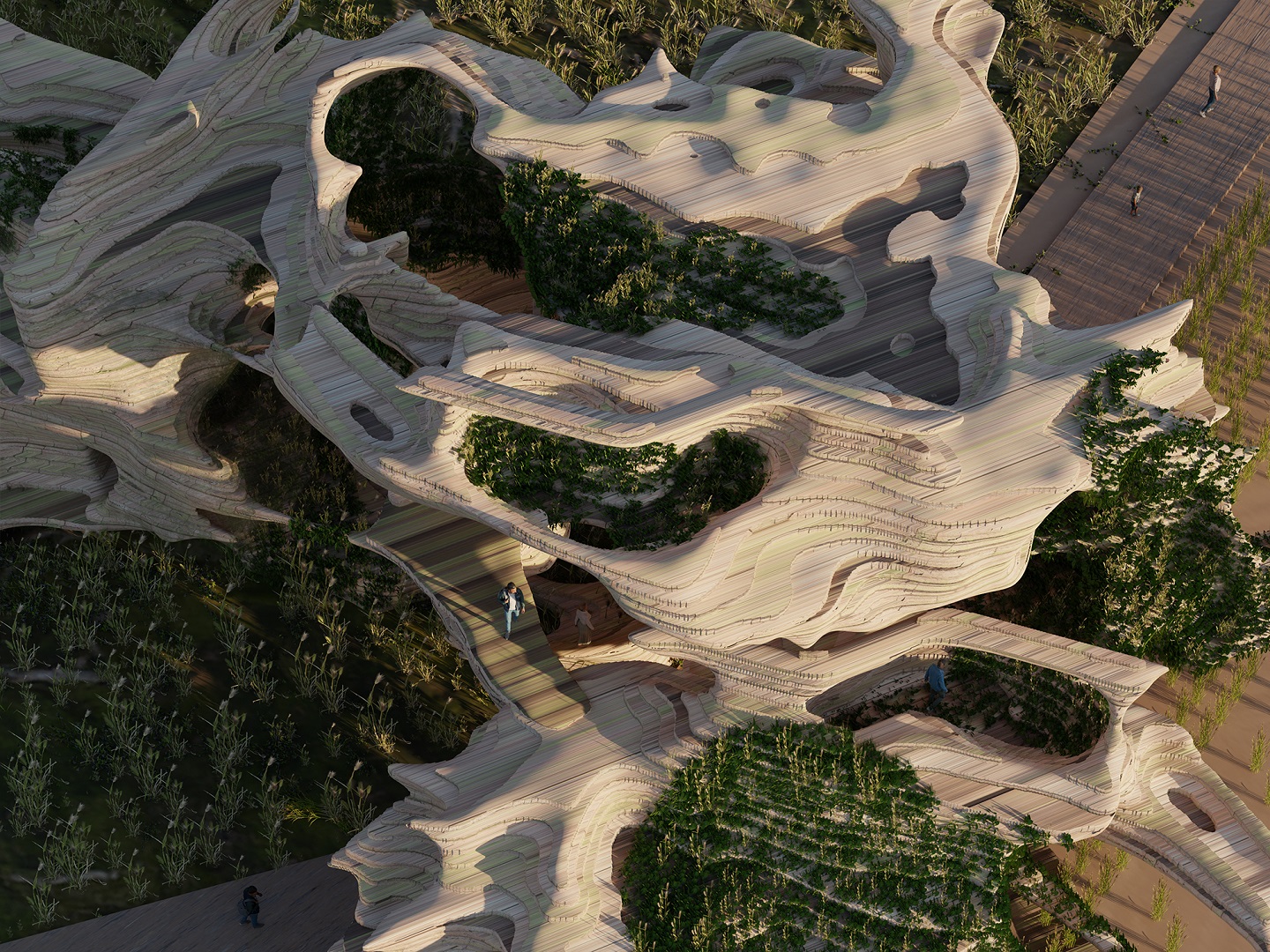
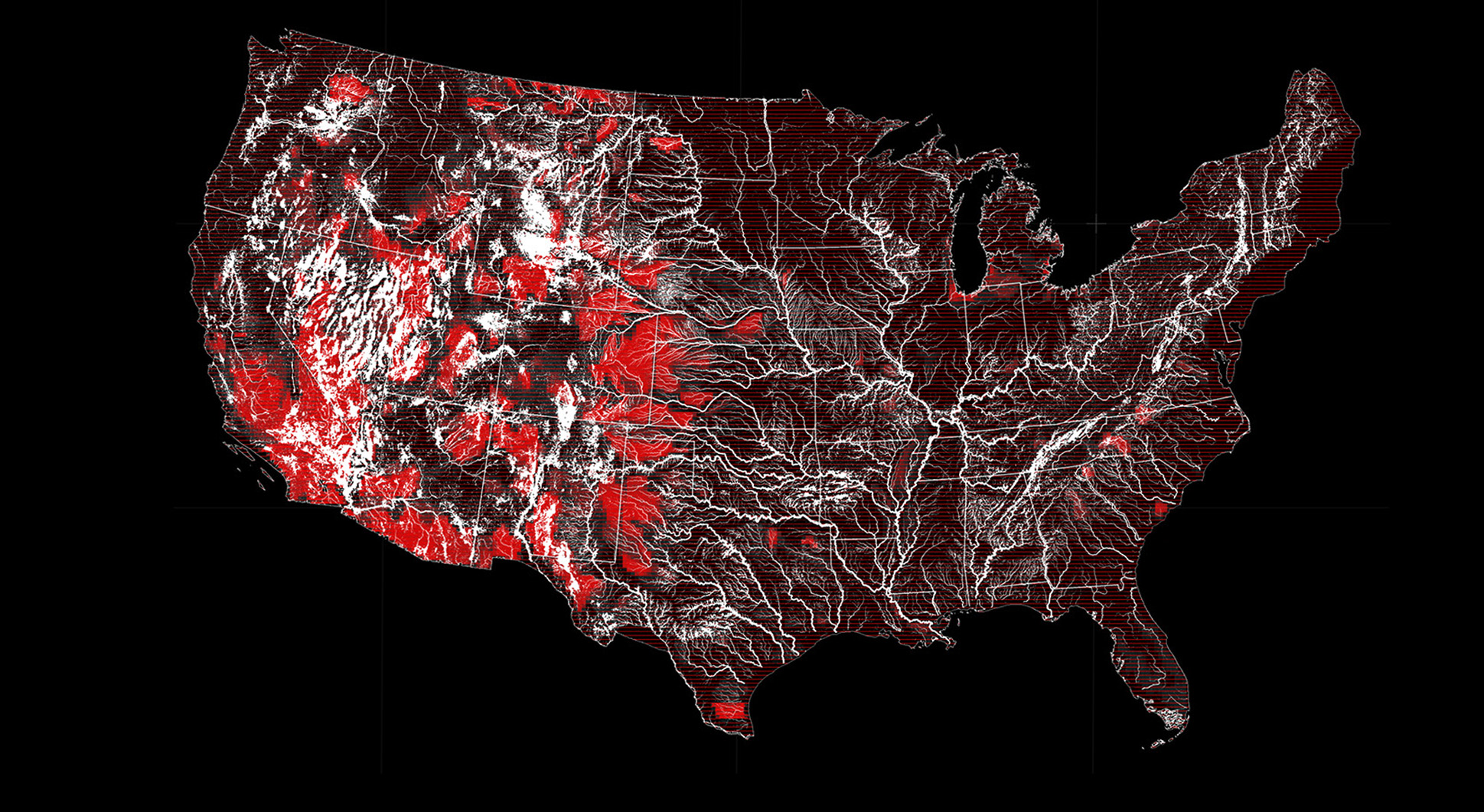
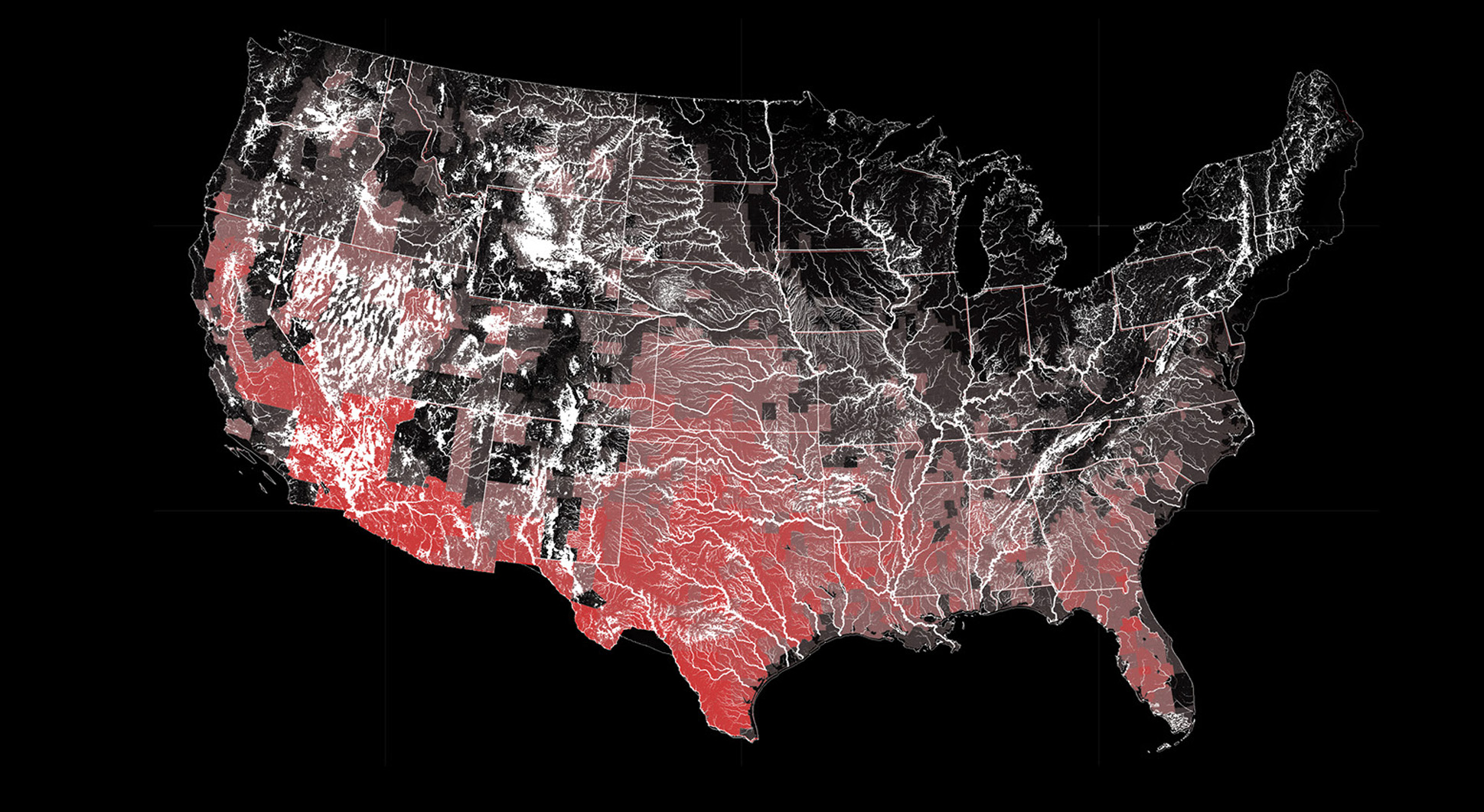
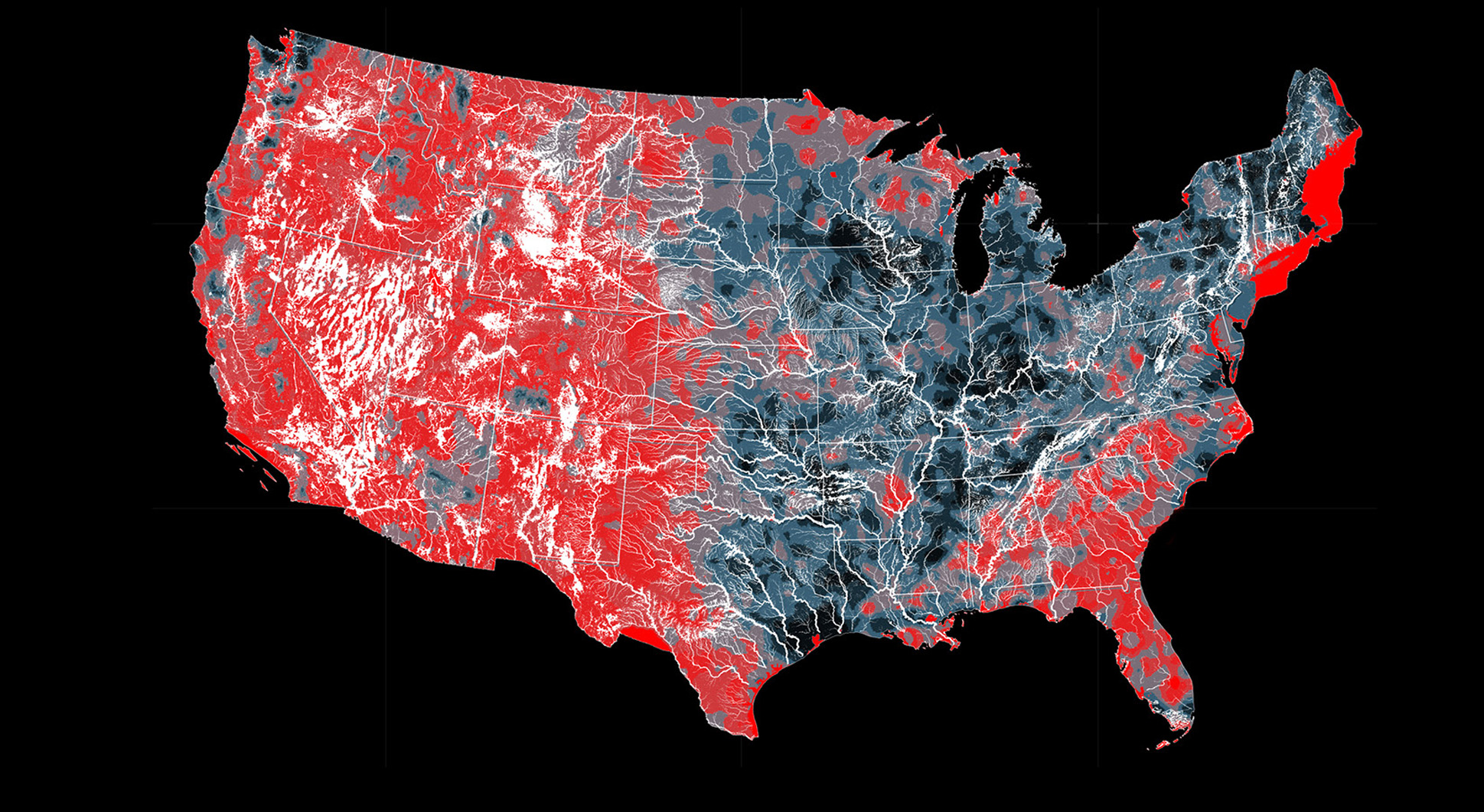
Arising Water Crisis
The project uses geographic data and climate predictions as mean to relate from a global dynamics to an architecture-scale use case. The inequalities in climatic impacts put specific regions especially at risk. The increase in temperatures and change in precipitation patterns render agricultural practices especially in the southwestern regions of the US as not longer viable.
The 100th Meridian, originally the natural transition between the dry west and wet east, shifts eastwards. The implications could erradicate entire economies if no action is taken.
The american Southwest is particularly prone to the affections of climate change. A more-than-average increase in annual temperatures and decrease in precipitation amounts makes the region more than ever dependant on its natural water resources- few major water arteries that are coupled to the viability of entire landscapes. The entire region is largely dependant on the three systems of Colorado, Sacramento and Rio Grande rivers.
Caused by infrastructural impacts such as Dams and Hydroelectric plants, especially the ecosystem of the Colorado river is already affected. At the same time, the artificial reservoirs of Lake Powell and Lake Mead sustain entire regions making the water system extremely fragile. Human and natural systems are already unseparately interwoven making them highly interdependant.
Salination
Only 2.5% of the earth’s water are fresh. Saline levels in fresh water have strated rising globally. The primary cause of freshwater salinatization are agriculture, resource extraction, and land clearing.
As a symptom of short-sighted practice, the Colorado river has already drastically increased in salinity. Most species are extremely sensitive to salt concentration causing a massive extinction of organic life.
The reason is the unsubstituted agriculture industry that counteracts losses due to the changing climate with aggressive fertilization and irrigation to maintain the yields. Water is already exported via pipelines to California and New Mexico.
Increased salination is not only caused by artificial chemical leaking of fertilizers. Most of the Colorado Basin consists of saline-high Mancos Shale sedimentary rock. Trough extensive irrigation, the bedrock is washed out of its minerals.
Salination threatens a fundamental resource- drinkable water. The long-term cost of salination, its effects on the environment and its degradation of arable land are immense.
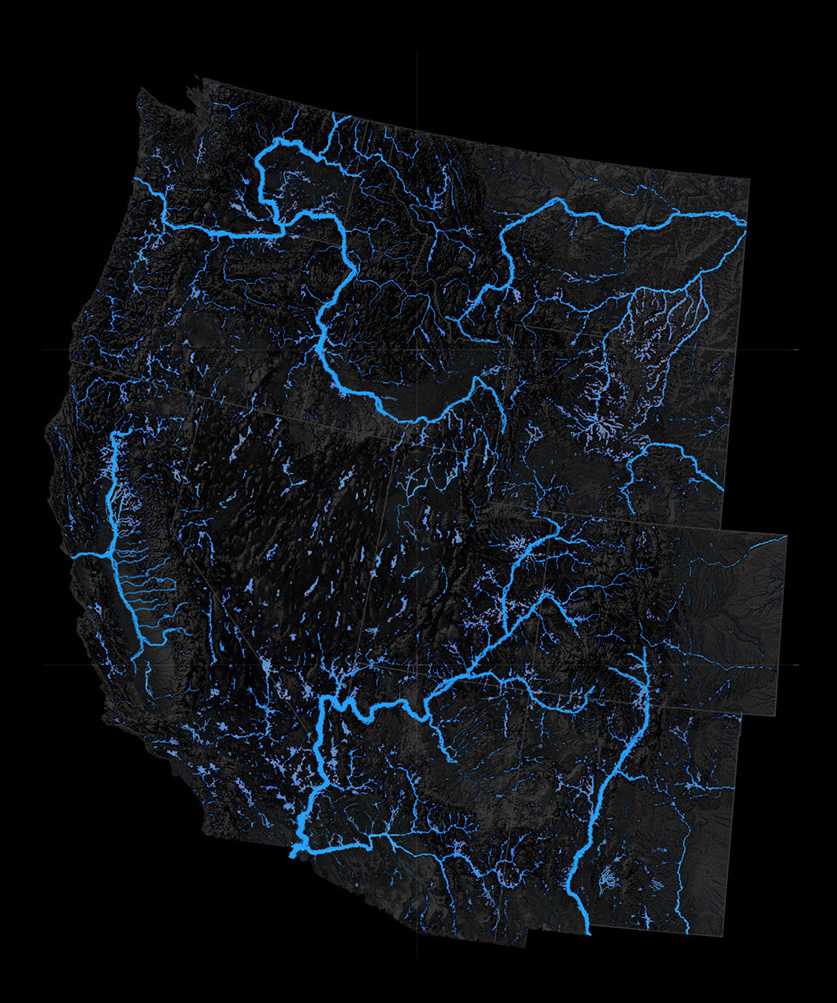
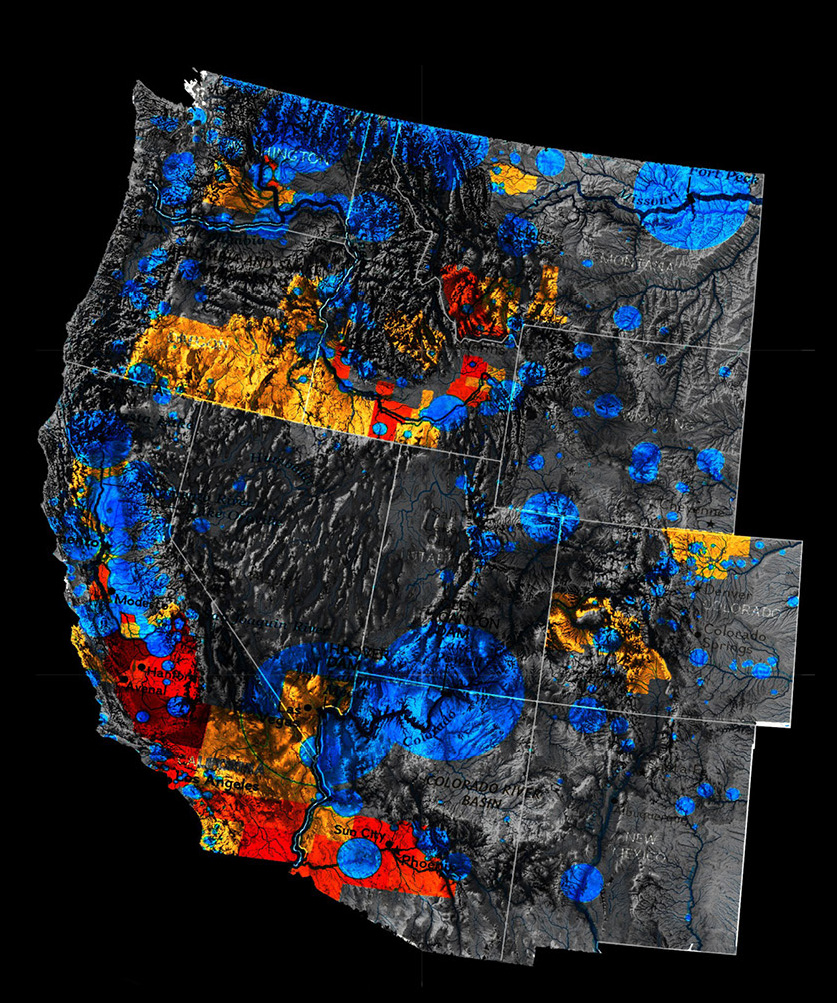
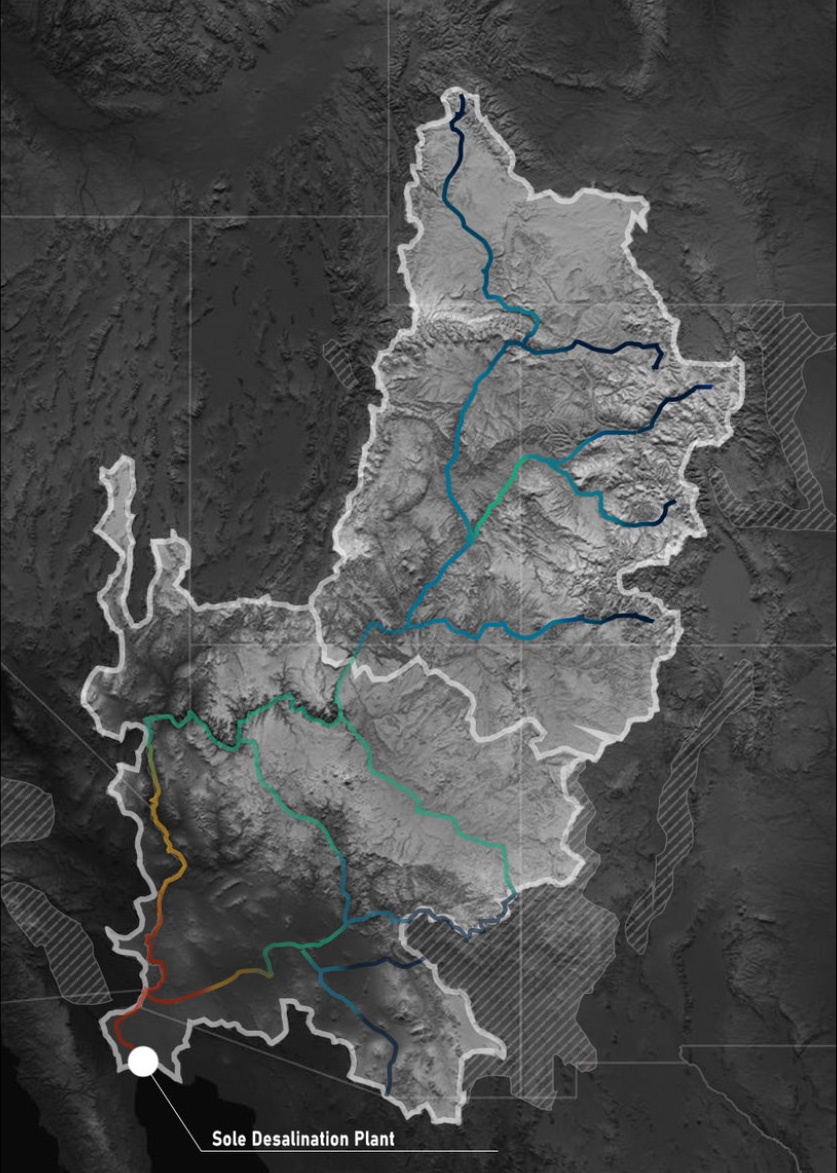
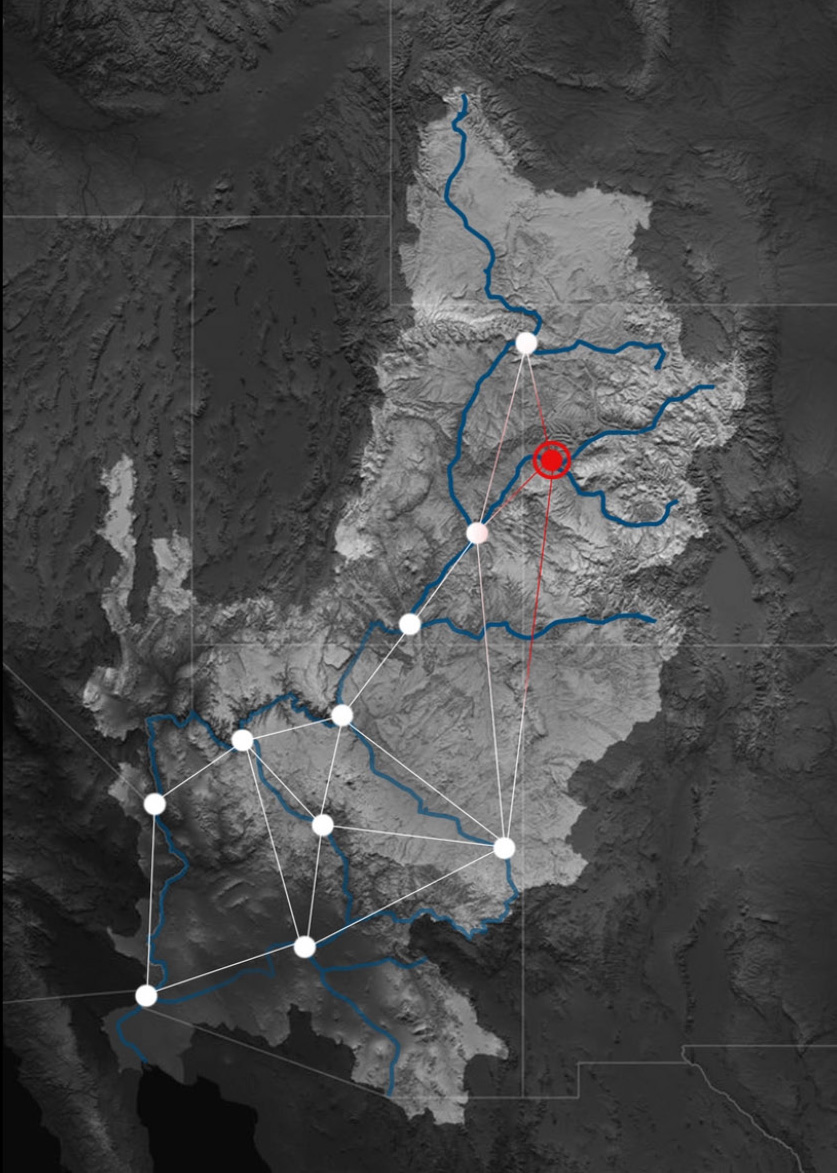
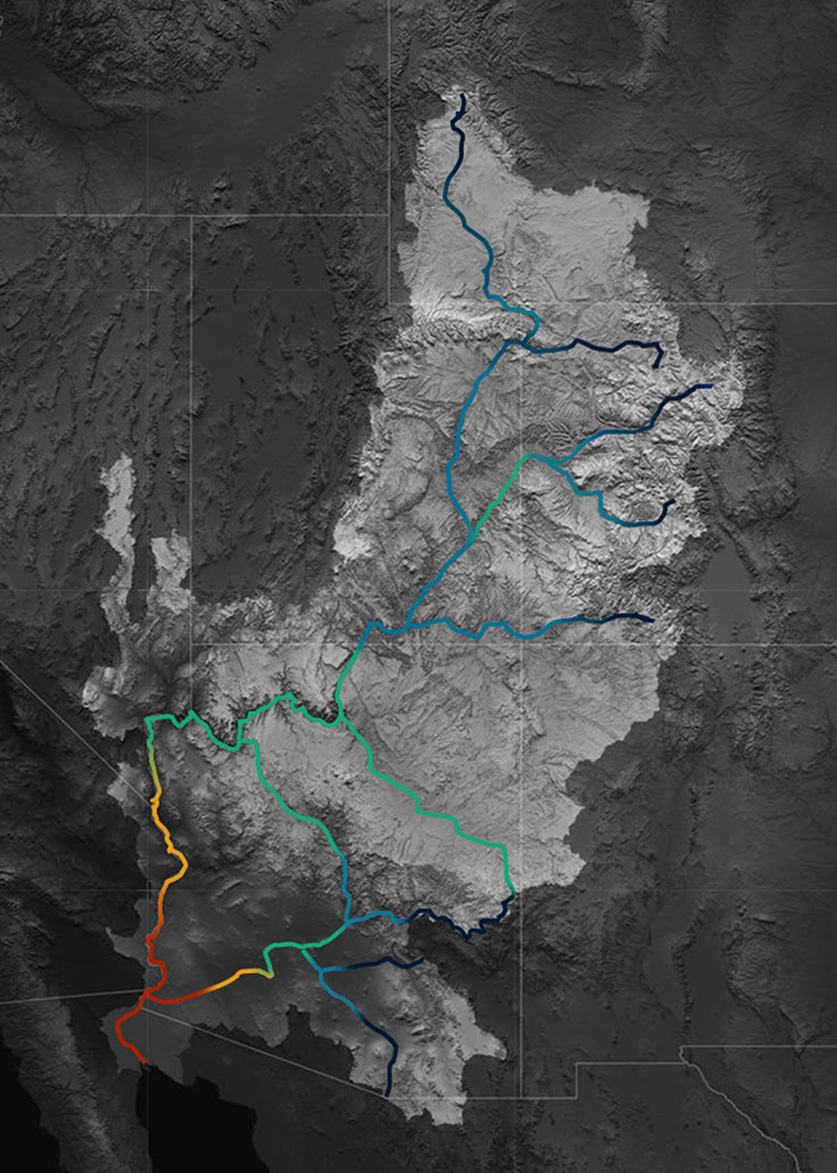
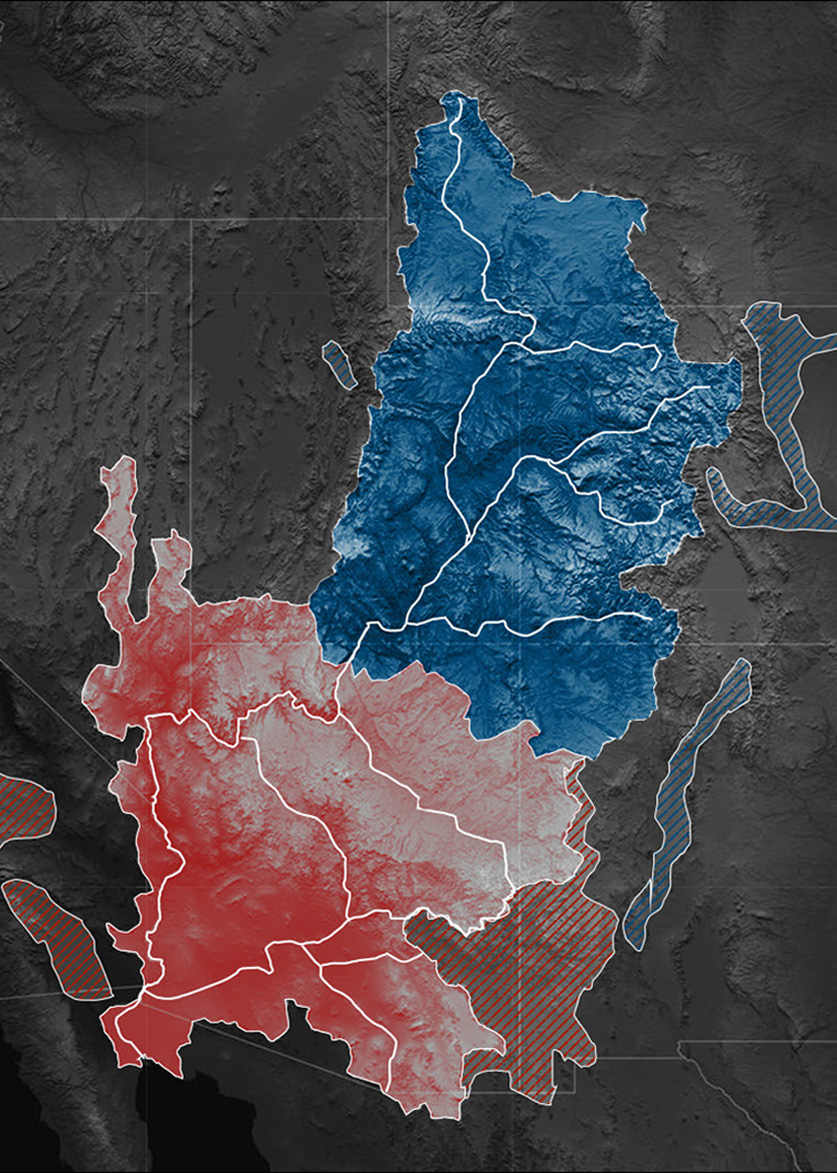
Strategy
The Colorado RIver is facing two interconnected issues: Water Shortage and Salination, which are both due to rigid farming practices neglecting a changing climate. Currently, a large Salination plant at the mexican border processes the river’s water, causing irreparable damage to the affected regions upstream.
As an overregional concept for regeneration, this project proposes decentralized deployments of interventions, working with local economies and environments. By using water in more effective ways, exisitng production levels can be maintained.In order to tackle the issues and link open ends, a circular system of Vertical Farming, Desalination and ecologic Healing is proposed as an Agriculture 2.0.
The energydemanding process of Desalination is made possible with the huge hydroelectric potential, and the byproduct of demineralized sludge is reused as fertilizer. The organic waste is used as fish feed and as organic matter and mycelium growth substrate, resulting in the reinvigoration of landscape and biodiversity through new sanctuaries.
The system is similar to existing 2-loop Hydroponics, but takes unique advantage of the salinated River turning commodities into assets.

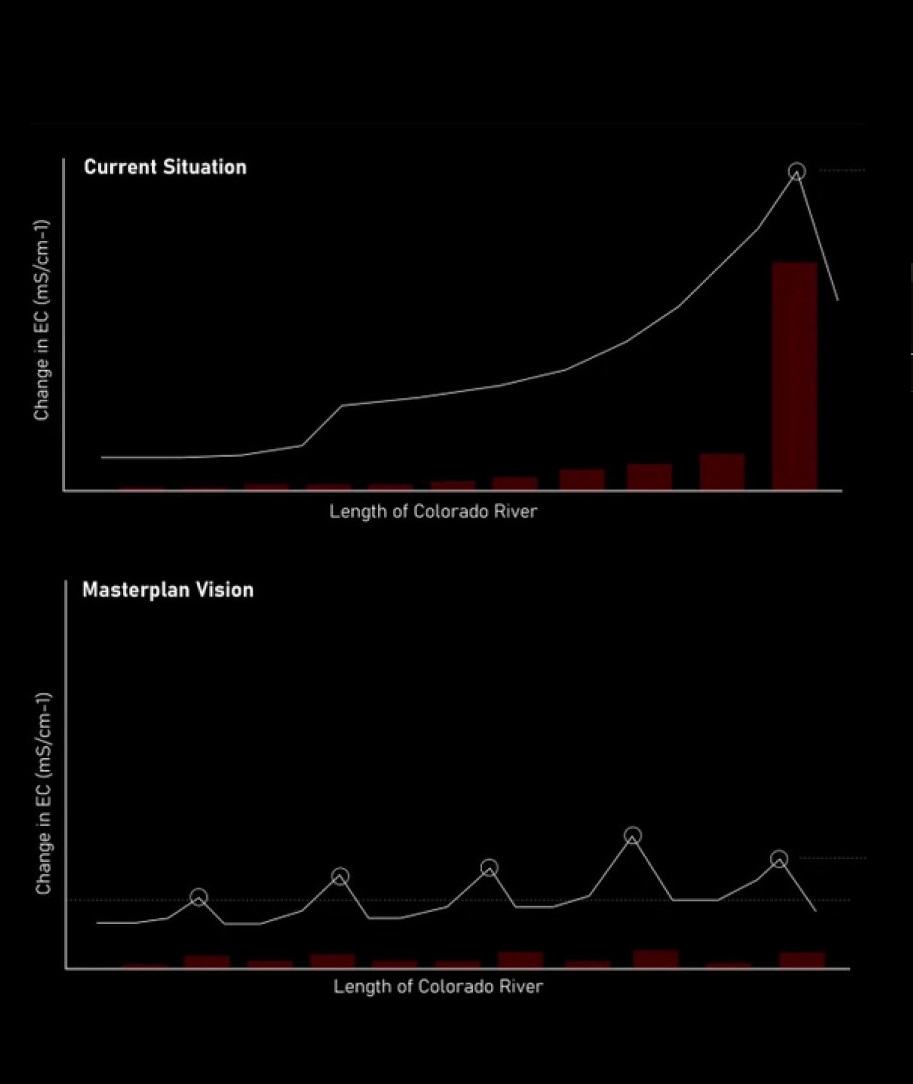
Grand Valley
As case study of the Masterplan serves the Grand Valley in Colorado. Located at the junction of Colorado and Gunnison river, close to the Utah border, the valley only resubmits 2% of total agriculutral backwash into the river, but is responsible for 17% of the saline pollution.
The entire Valley is degrading, both environmental and social. Ongoing desertification and unemployment increase the economic pressure and increase the release of toxins in order to keep up with demands.
Aside a spacetaking settlement policy of Cul-de-sac and large sealed parking lots, the ongoing degradation can be seen everywhere in the valley. Most fields contain their own reservoirs for irrigation and the monocultures are decreasing the biodiversity and plant resilience.
In addition, the constant irrigation causes the degradation of the topsoil making it vulnerable to erosion. The organic extinction is already affecting microclimates, leaving hardly any regular plants due to salinated streams.
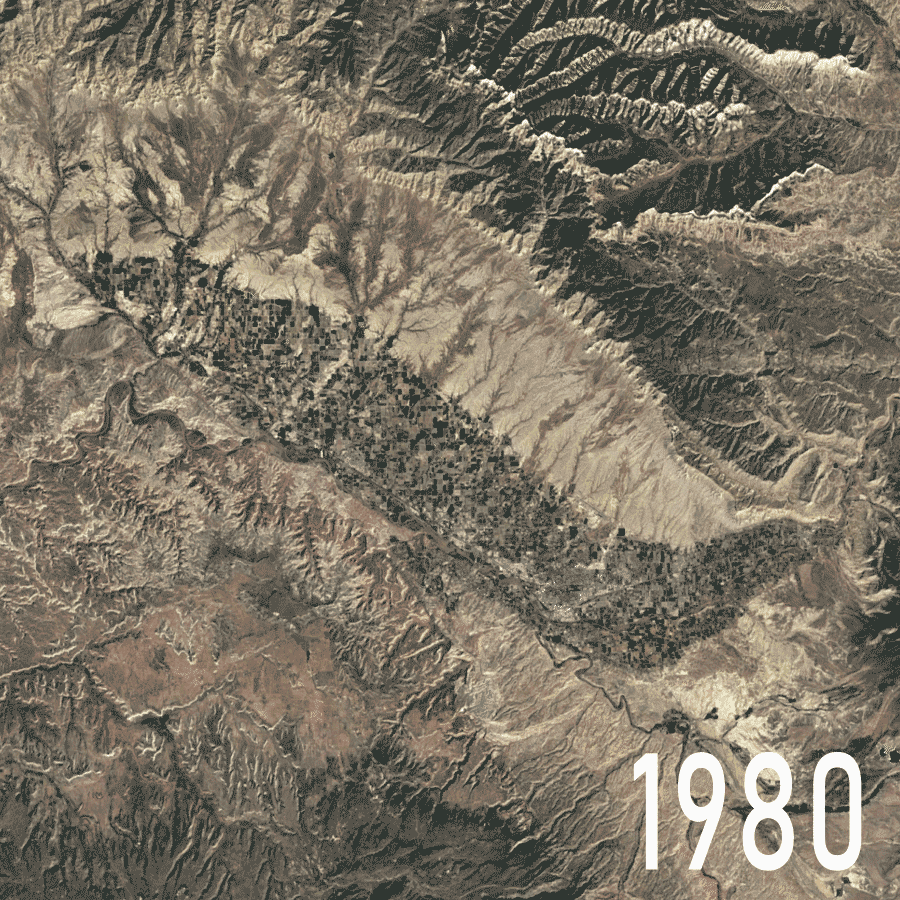
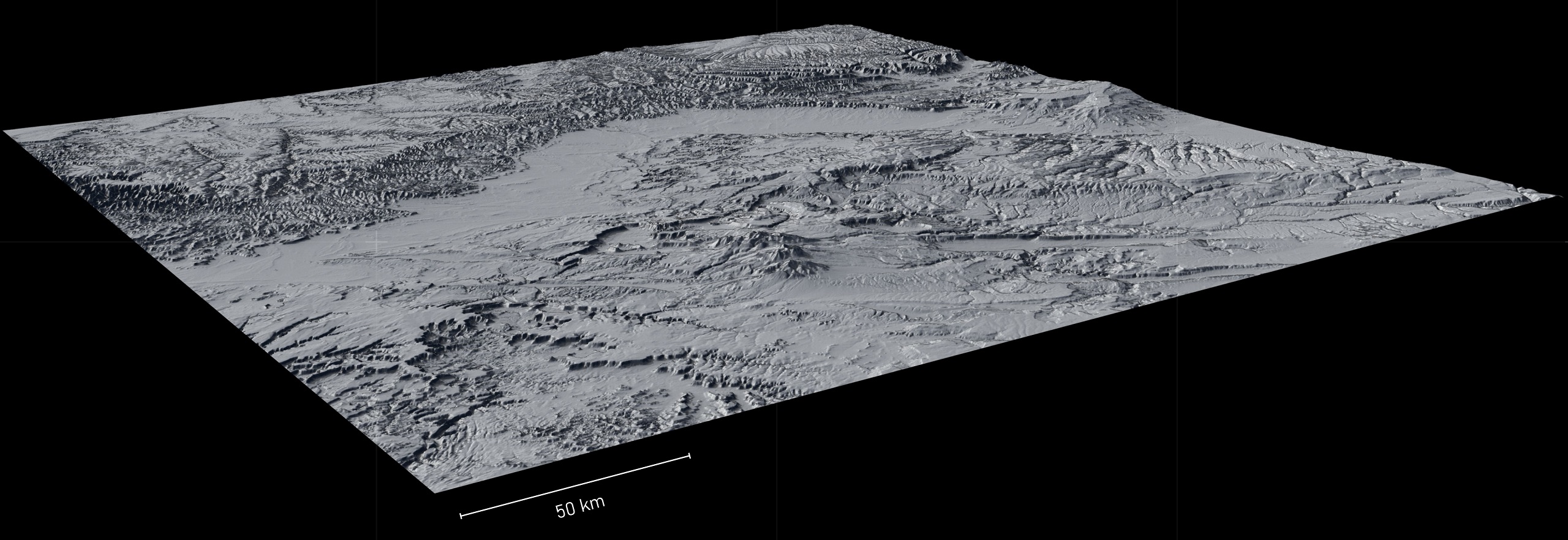
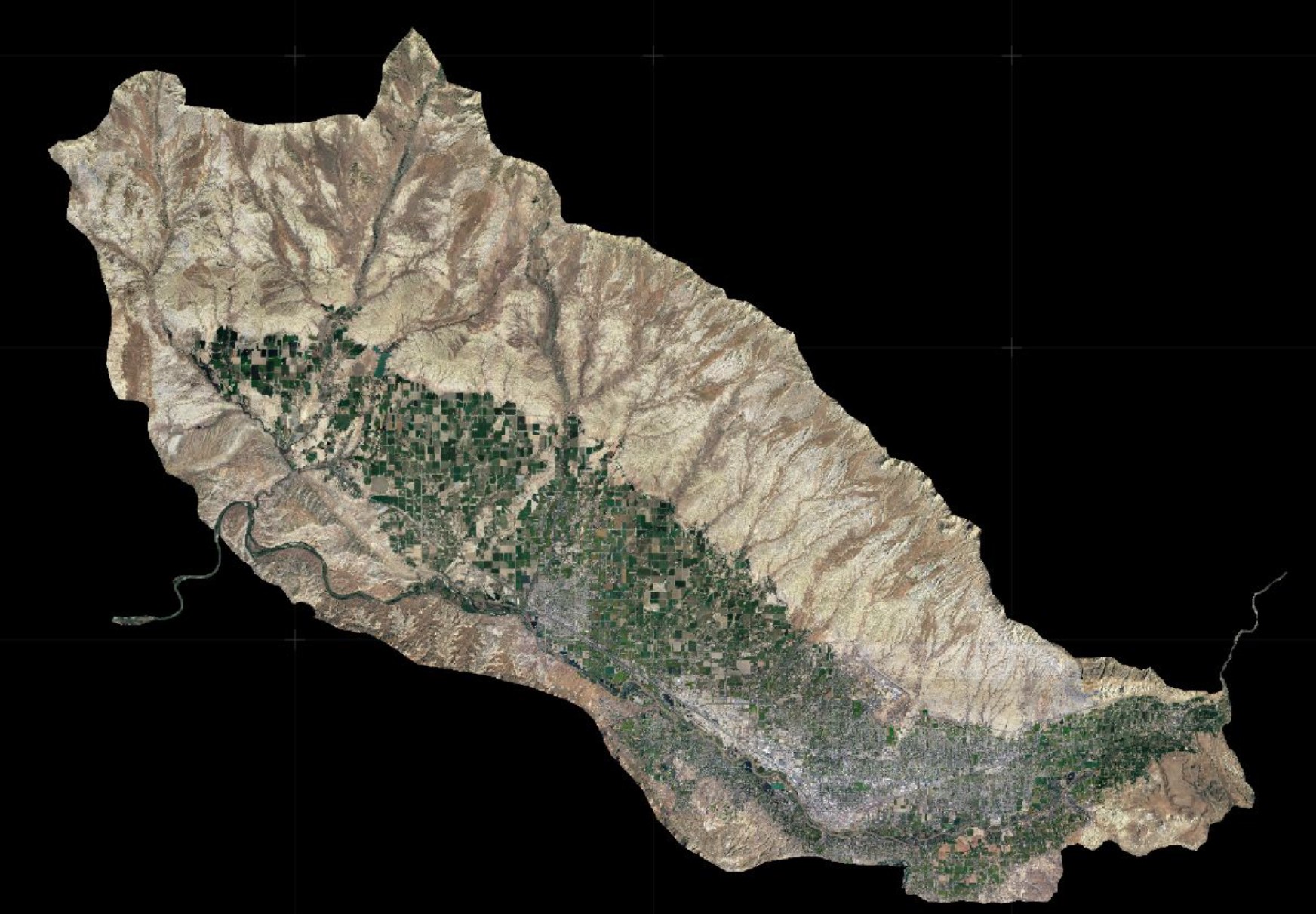
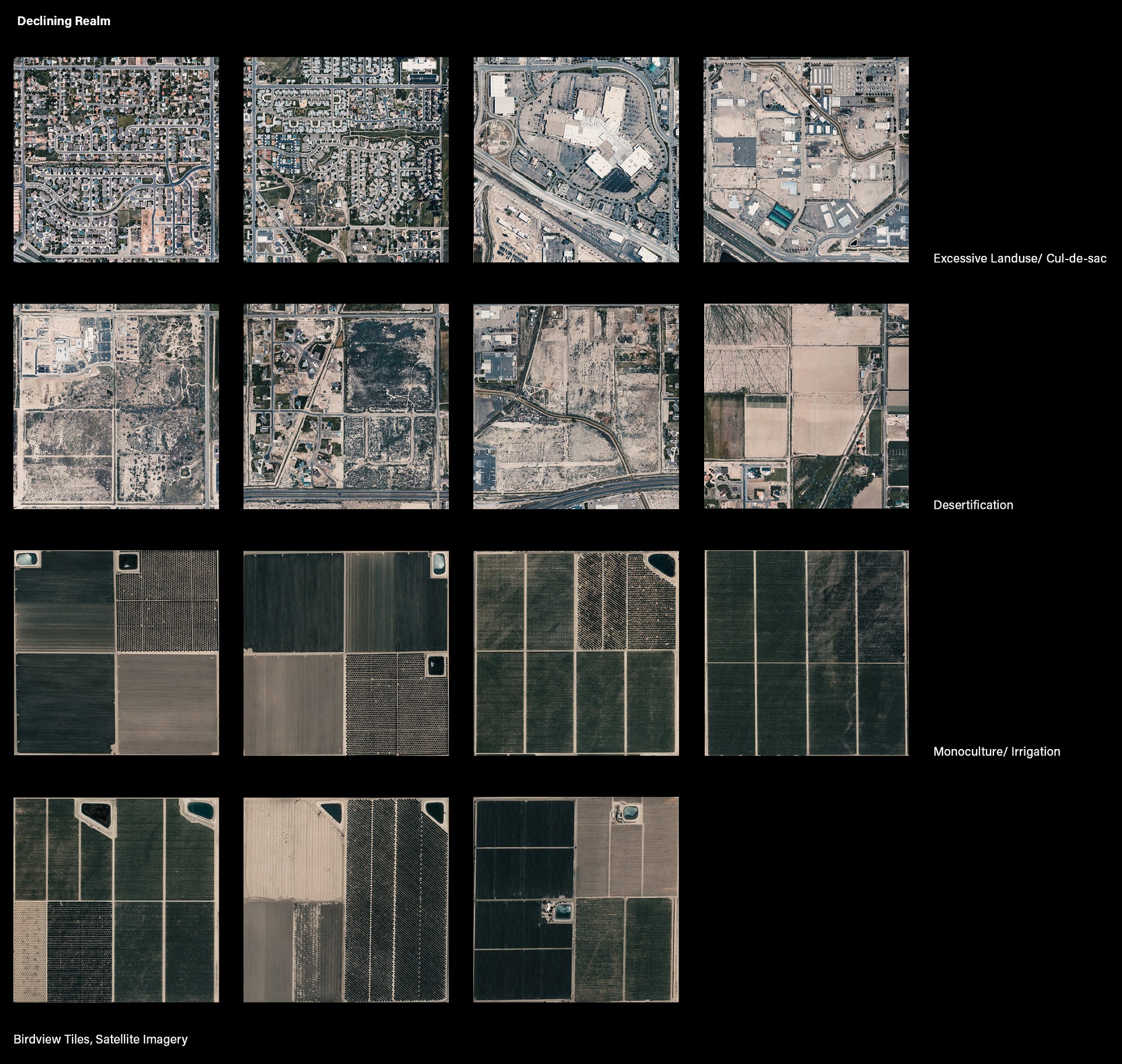
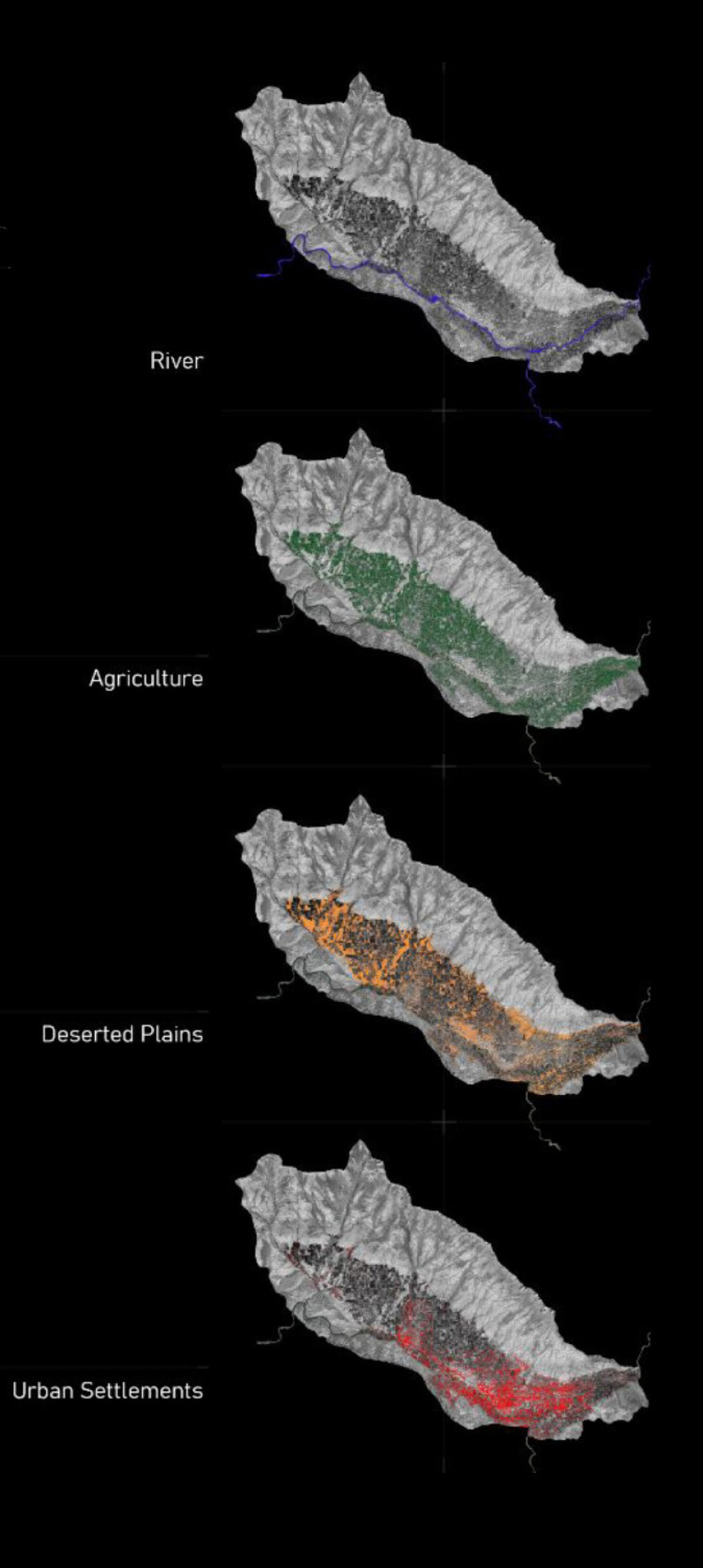
On its way through Grand Valley, extensive irrigation combined with fertilizer causes almost a fifth of the Rivers’ salinity, causing ecologic problems further downstream.
As the agricultural sector is demographically the most important, this is counteracted by monocultures, more aggressive pesticides and heavy freshwater extraction.
What offers short-term relief drastically severes enviromental conditions on the long term. This project proposes a plan of recovery, utilizing the symptoms of salination as initiator for energy extraction by reverse osmosis. At the same time, it underlines the importance of long-term planning.
An artificial irrigation channel diverts water at the hydroelectric dam situated at the entrance of the valley. The water travels north to south through runoff streams, washing out the bedrock and picking up chemicals from fertilizer.
The proposed solution still uses the channel to work with gravity, but collects the water along the way in processing units. It acts as the backbone implementation for a long-term healing process, substituting industries and environments alike.
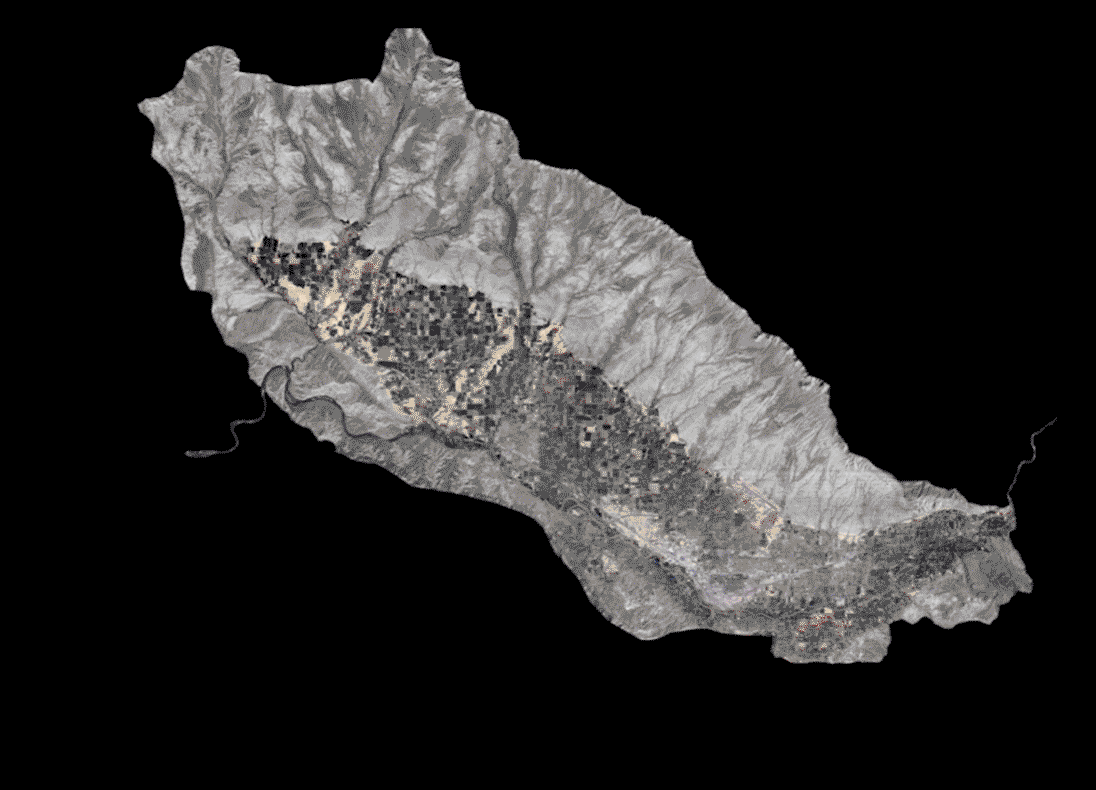
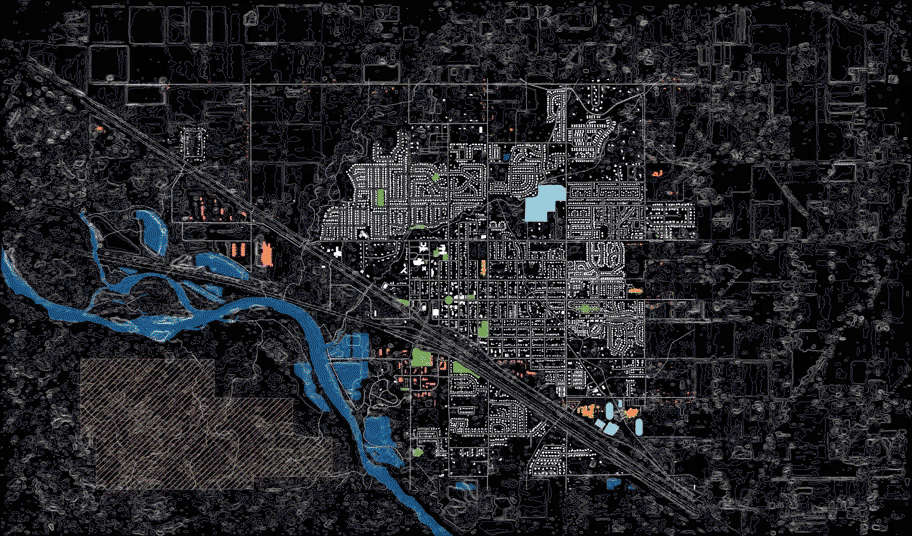
The Masterplan shows a network of water processing plants, vertical farming- and biomass disposal facilities. This healing process slowly transforms the landscape over time.
Water purification and -desalination plants are placed strategically along existing irrigation channels. Here, a cleansing cycle is initiated, providing fresh water for aquacultures.
The implementation of a new technology acts as the nucleus, allowing novel farming- and regeneration strategies to follow up.
Over time, the organic waste of the hydroponic production is turned into Mycelium structures meant to function as nourishing ground of a biologic repopulation.
The formerly disruptive practice of agriculture is therefore turned into a driver of regeneration, redefining the relation of industrial production and the environment.
The mycelium-based building material slowly turns the landscape into refuges for humans and natural agents alike. Agricultural production is no longer seen as mere extraction, but as transformative opposition to climatic disruption.

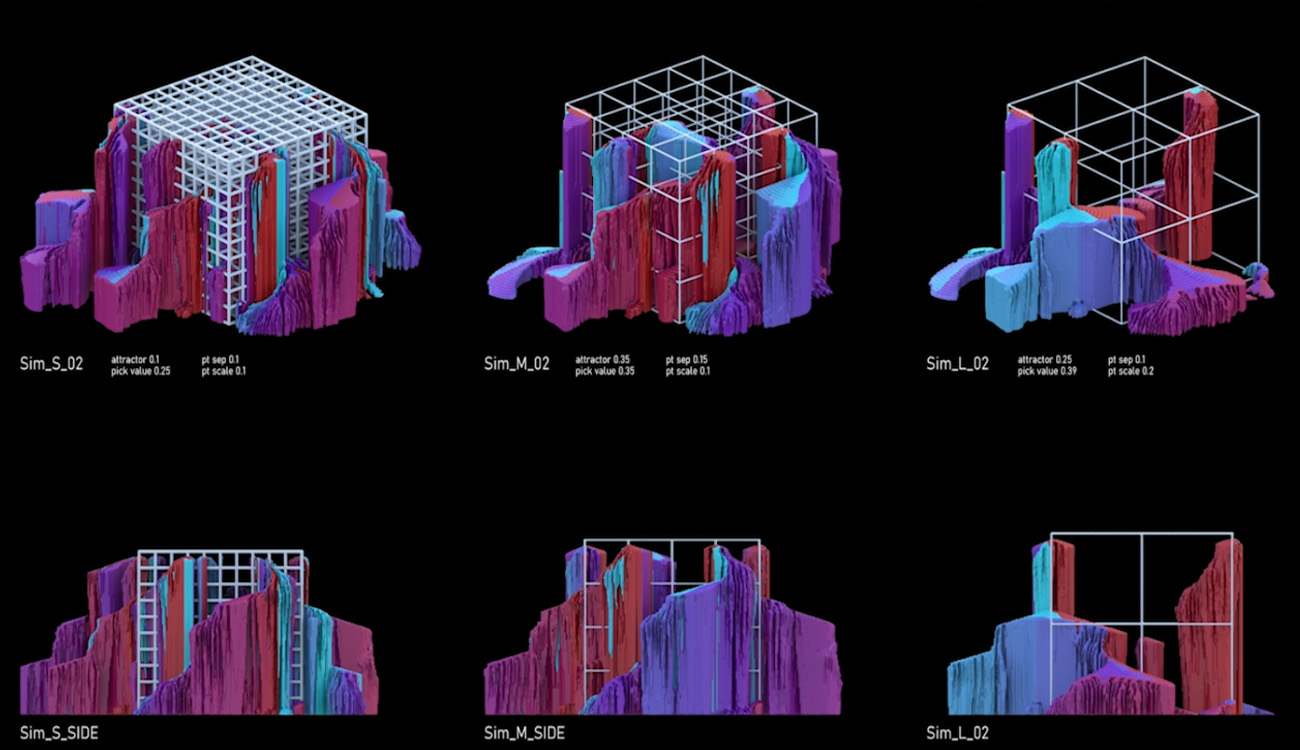
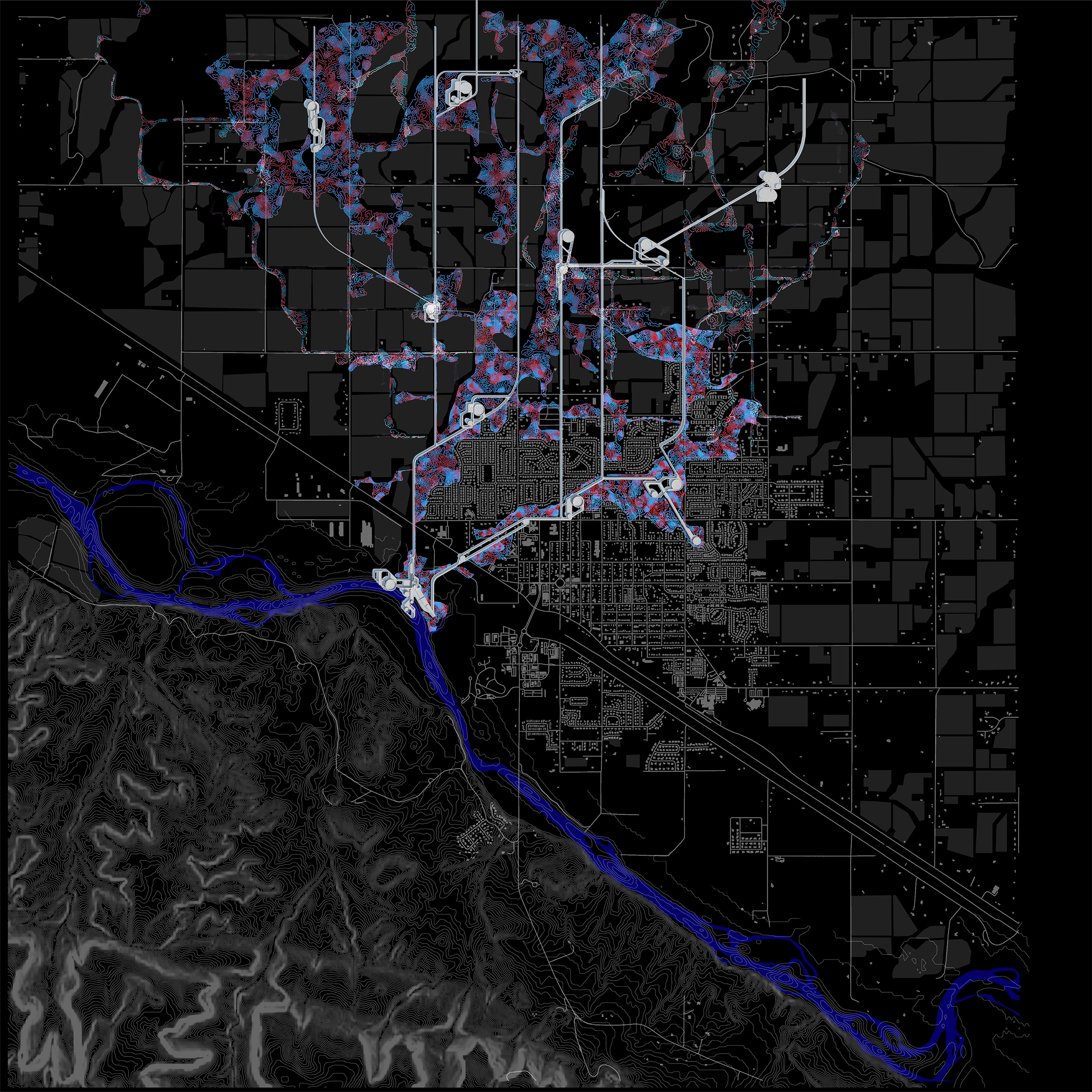
Through robotic printing, the infrastructural intervention is turned into habitats over time. A network of lattice structures is used as rails for the robots, slowly housing in the systems. The emerging structures provide shelter and refuge as well as renourish the soil for small-scale traditional farming.
Artificial and biological components enter a new symbiosis, harmonically integrating into the landscape. Contributing to a natural-technical continuum, the lifecycles overlap, letting the framework for the printing robots being overgrown by time and then dissolve within.
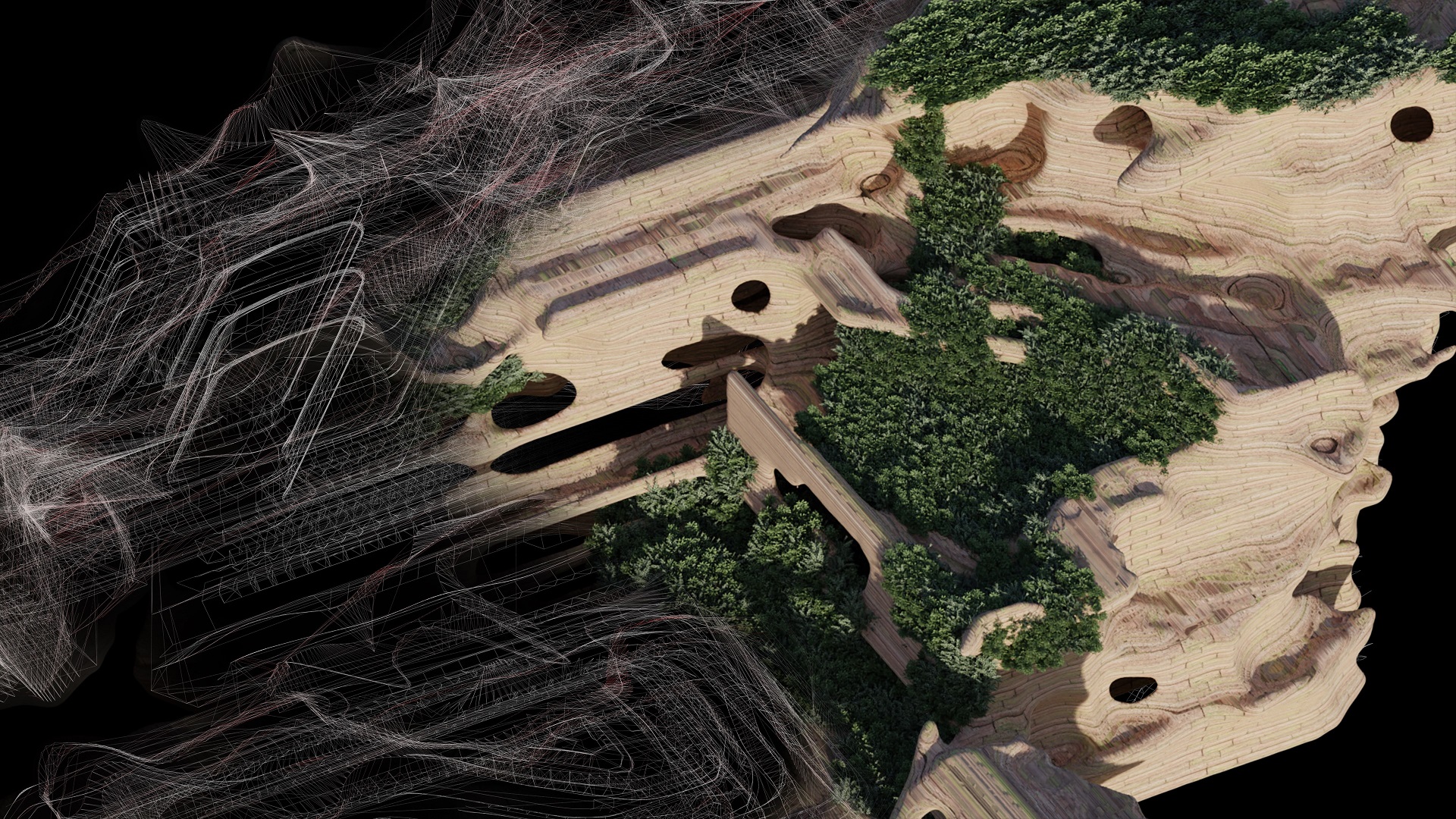
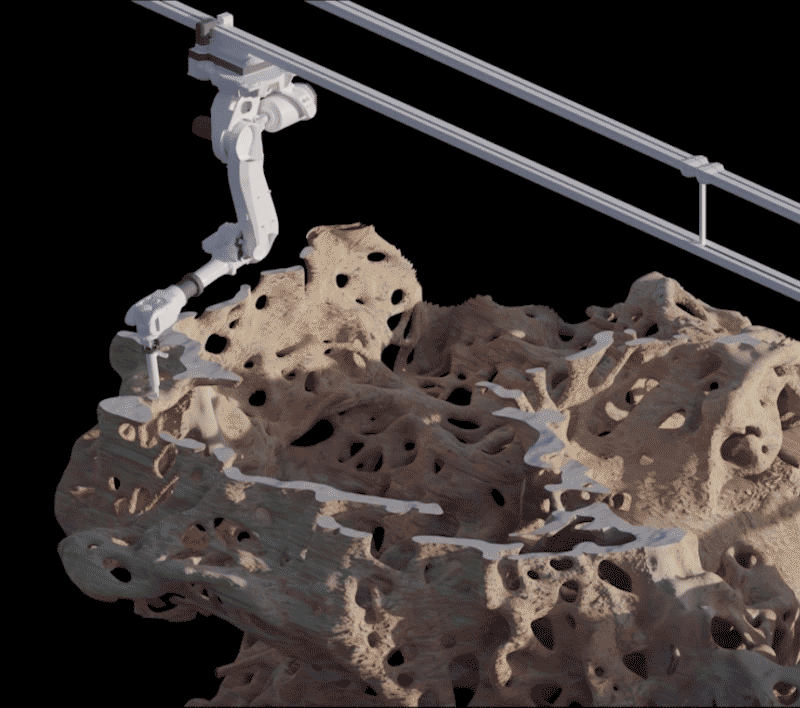
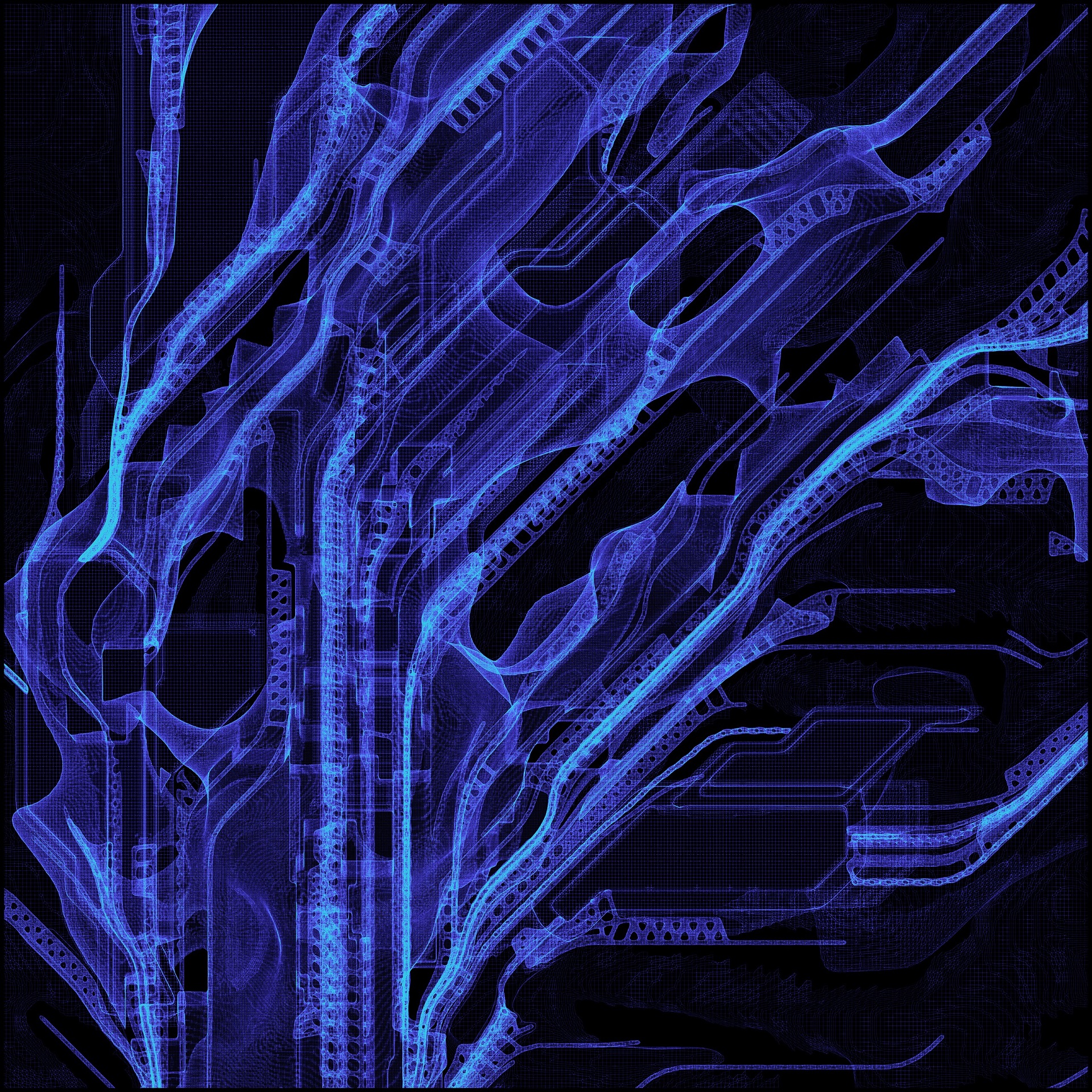
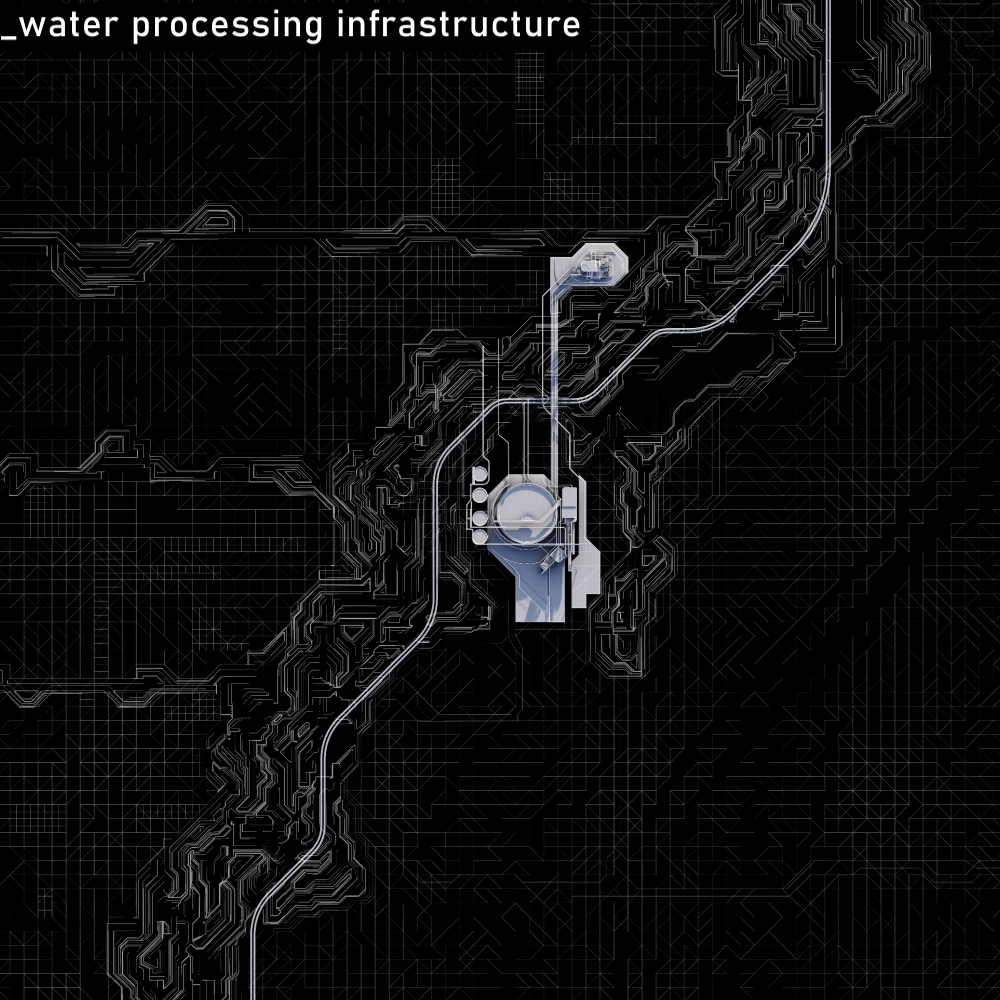
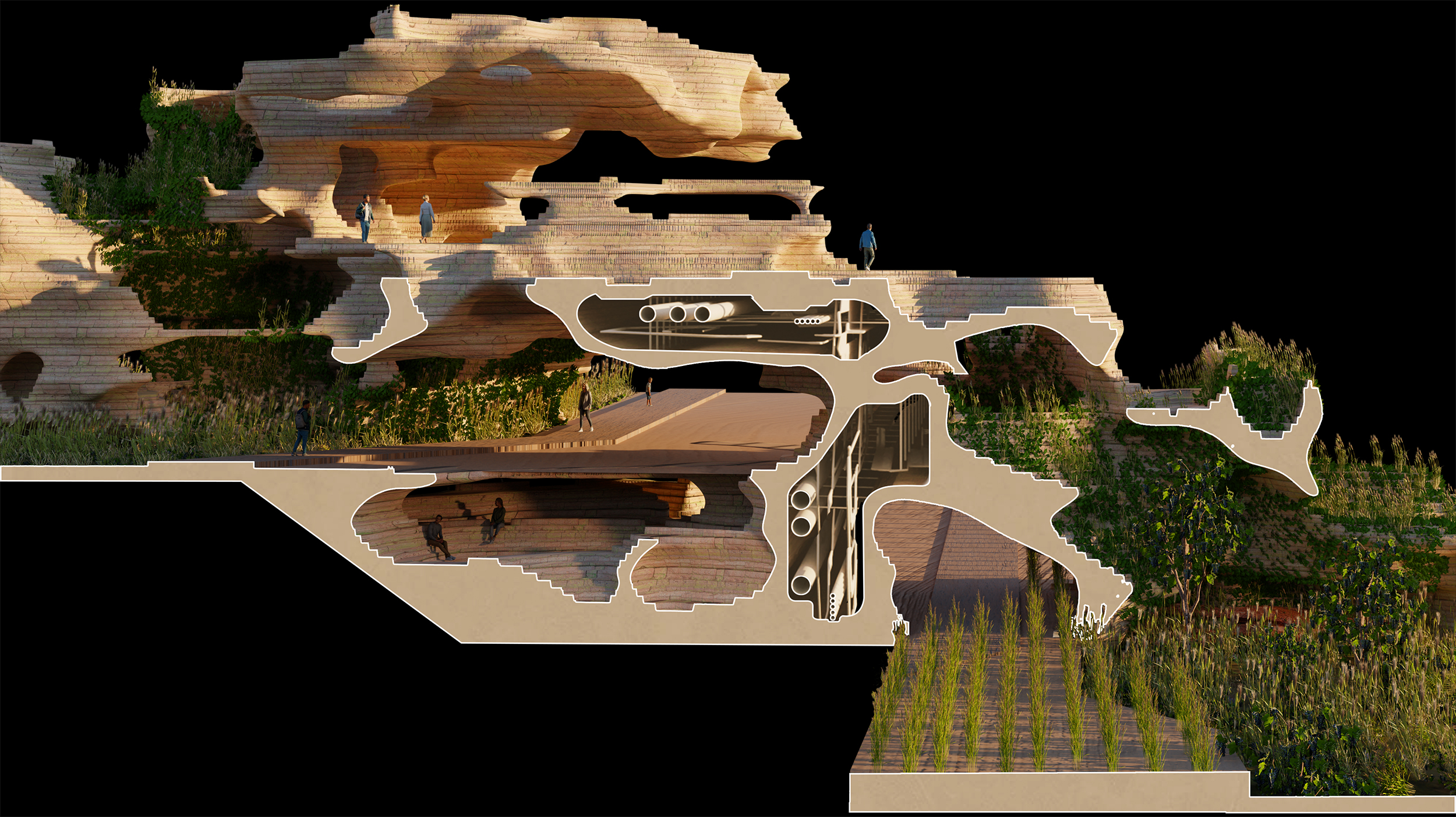
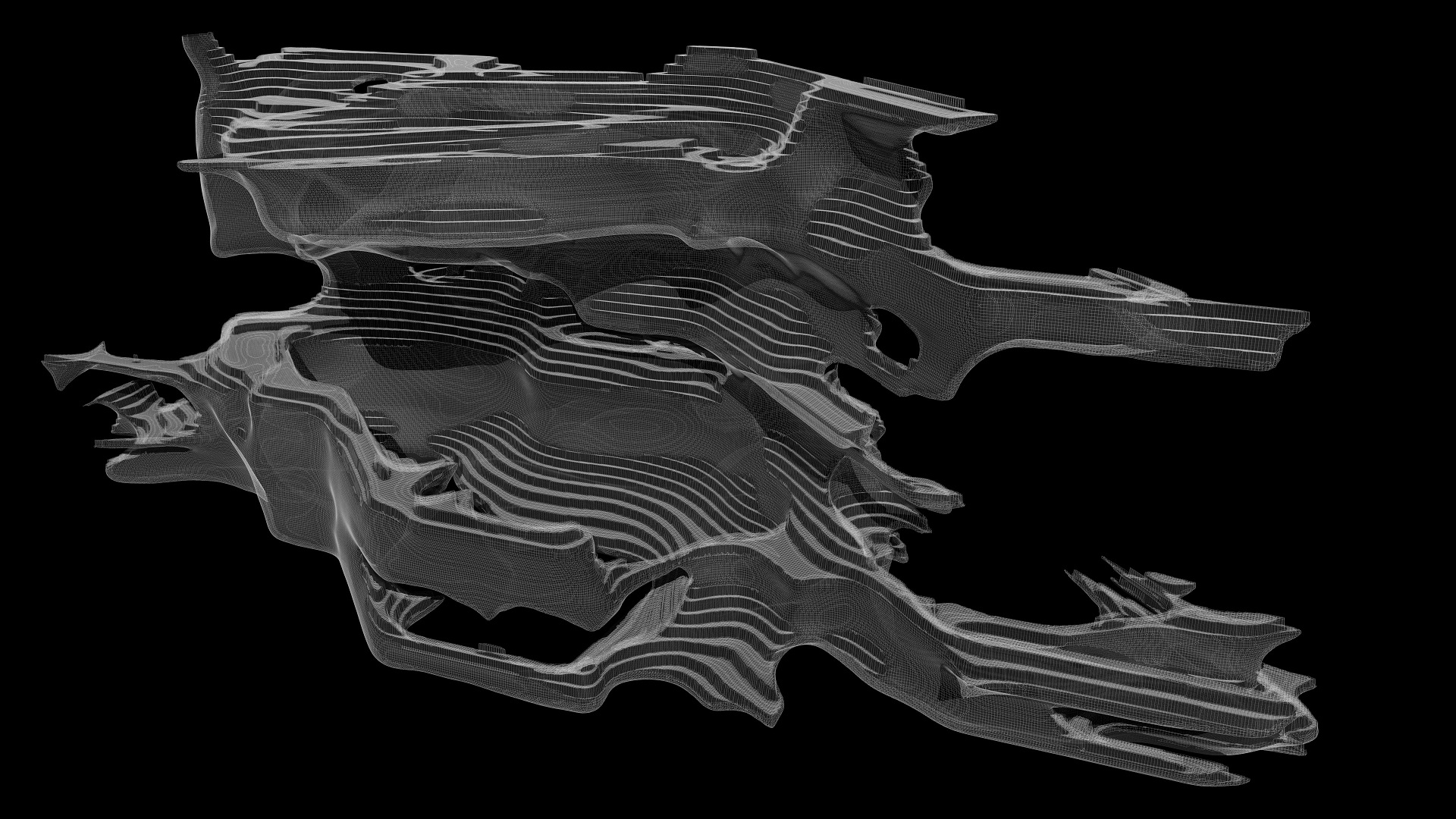
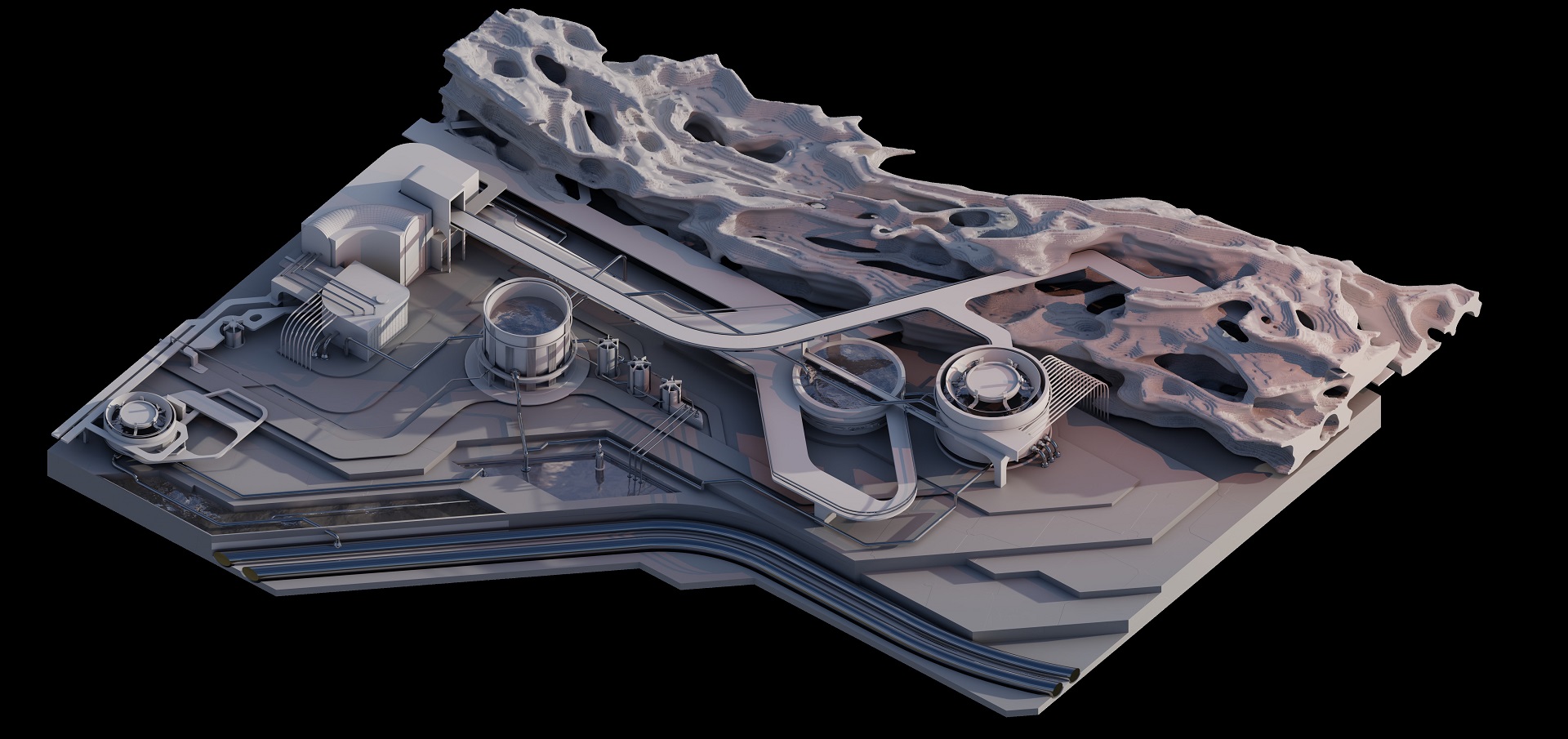
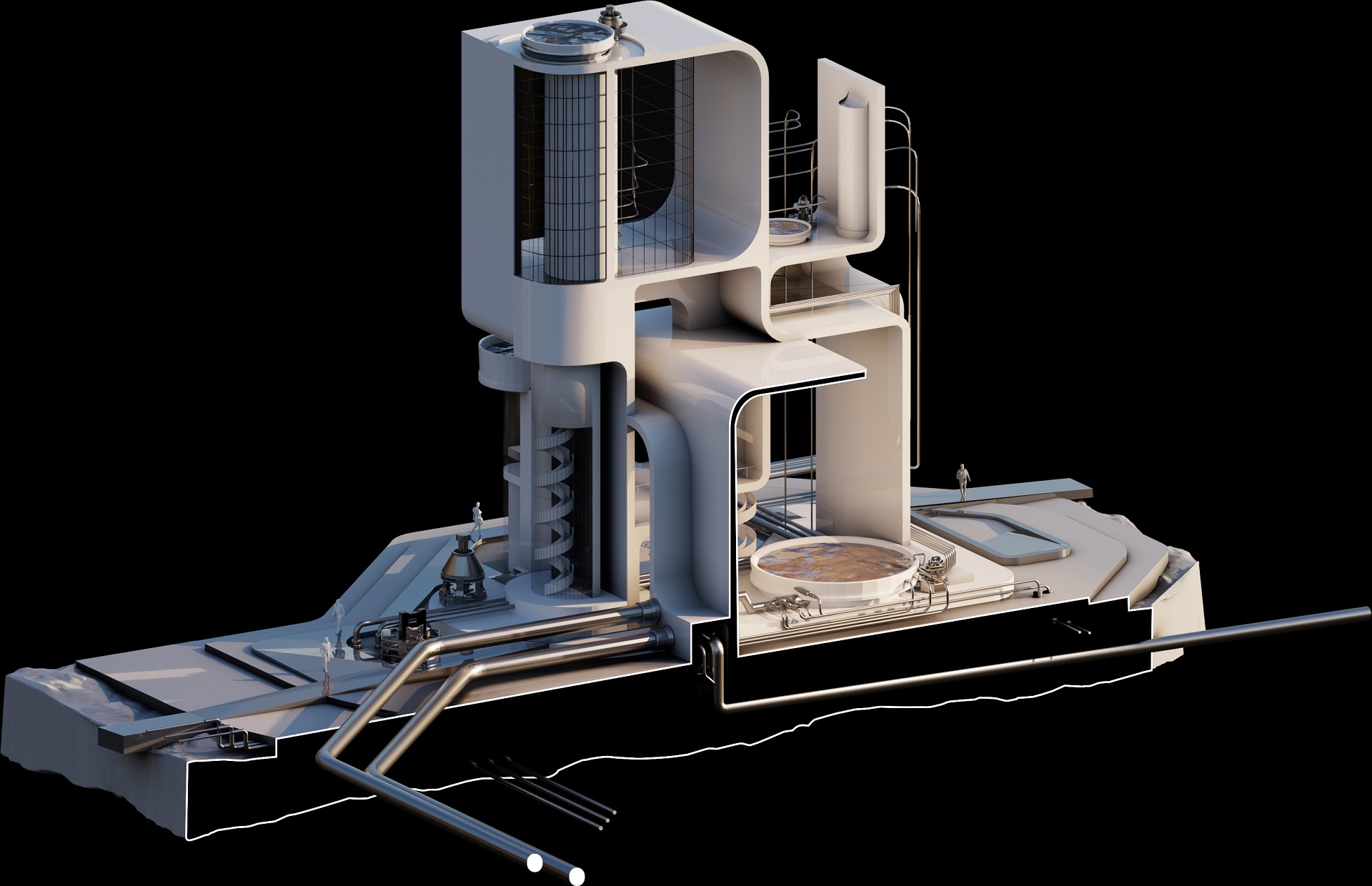
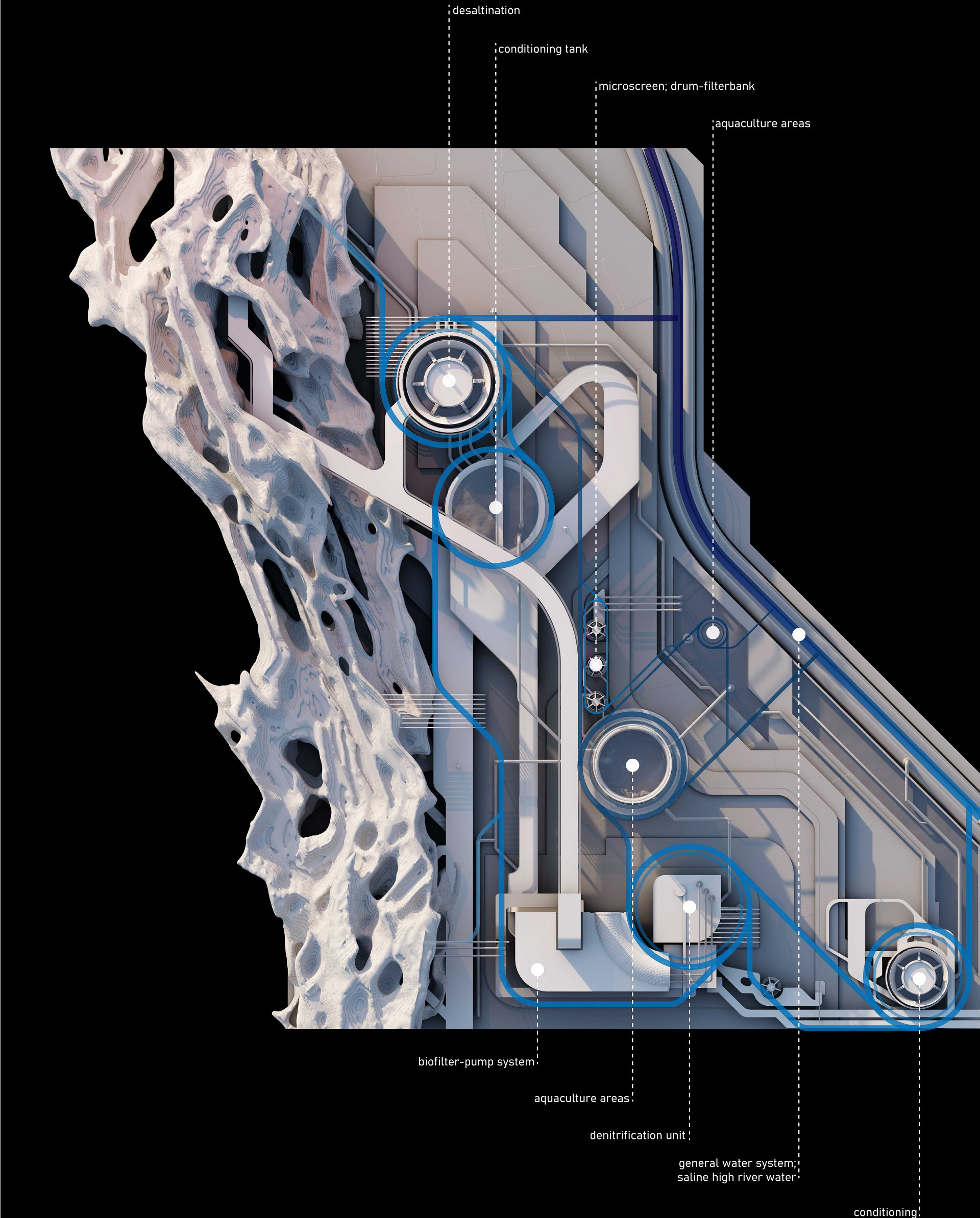
Water purification and -desalination plants are placed strategically along existing irrigation channels. Here, a cleansing cycle is initiated, providing fresh water for aquacultures.
The implementation of a new technology acts as the nucleus, allowing novel farming- and regeneration strategies to follow up.
The desalinated water is used in effective vertical farming crop production, in imminent symbiosis with adjacent aquacultures. Instead of disposing the traces of productgion downstream, the leftover organic mass is used as fertilizer for outdoor crop production.
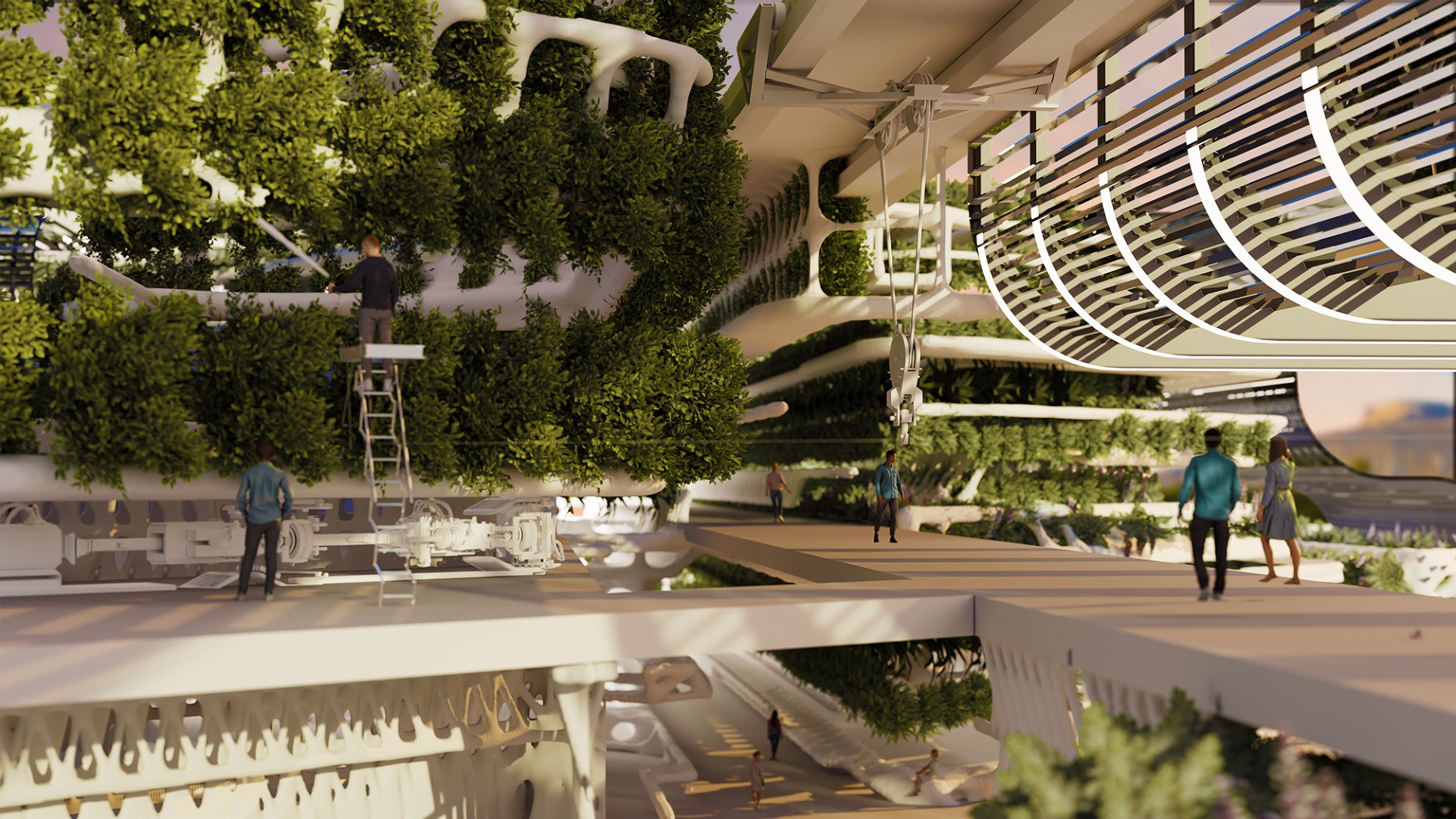
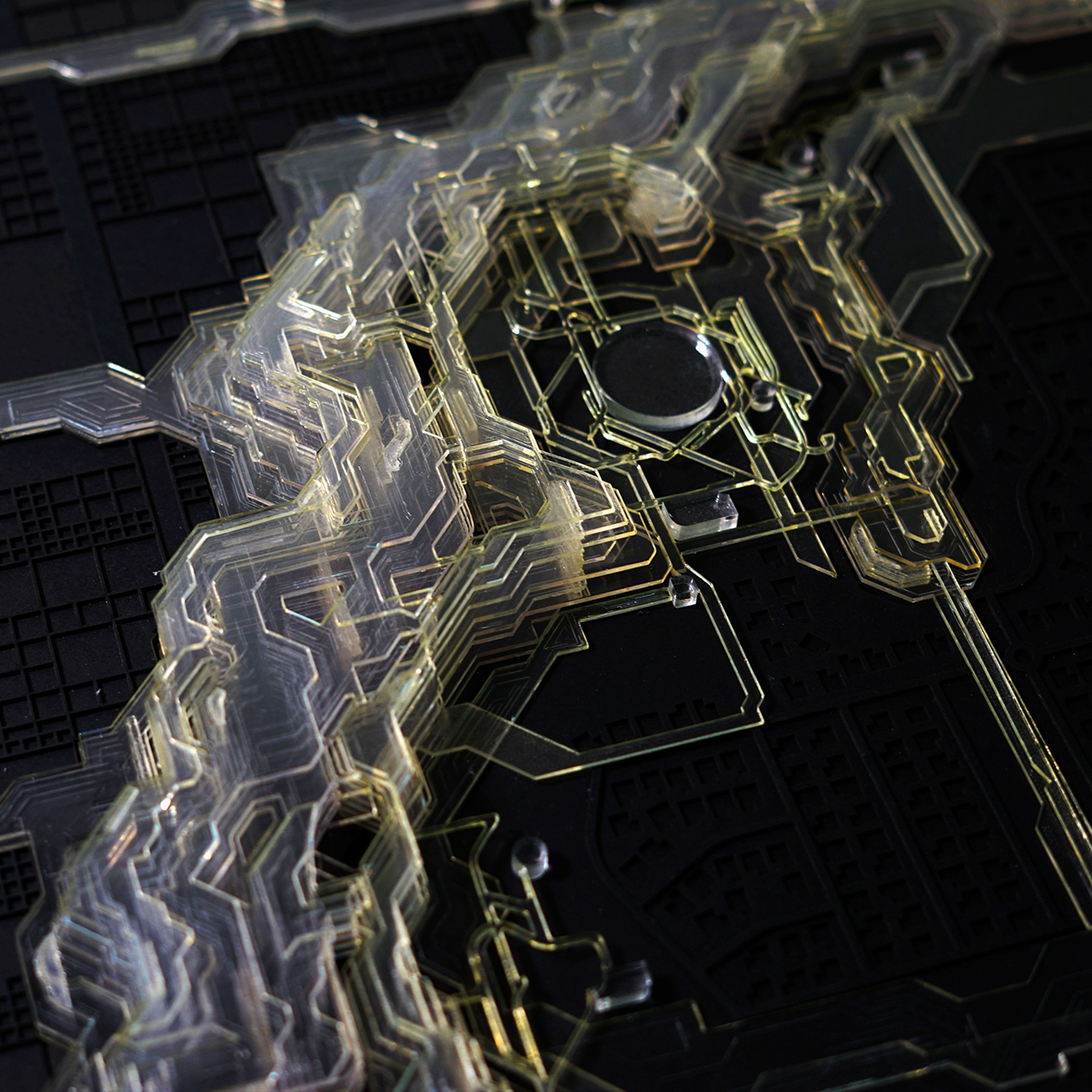
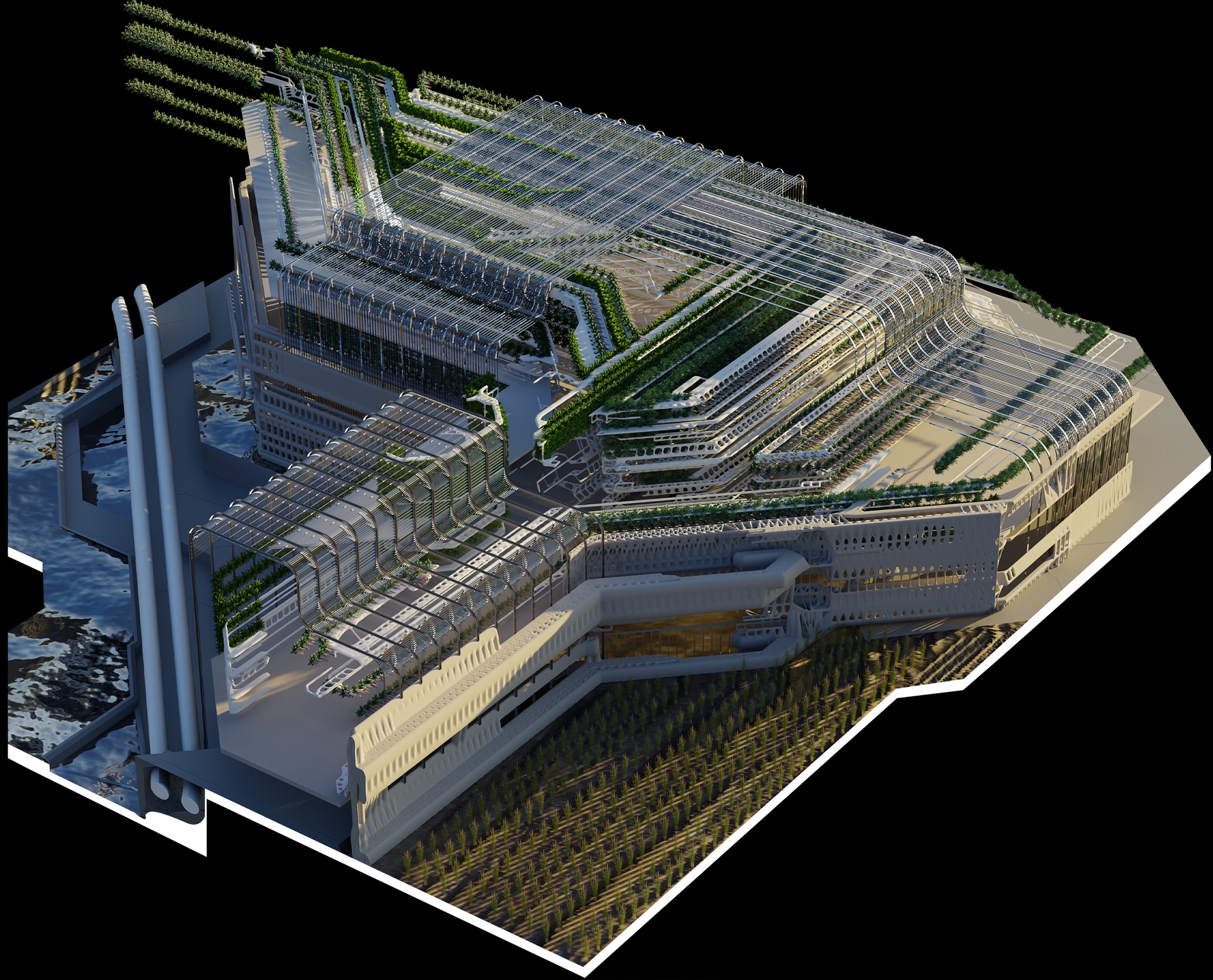

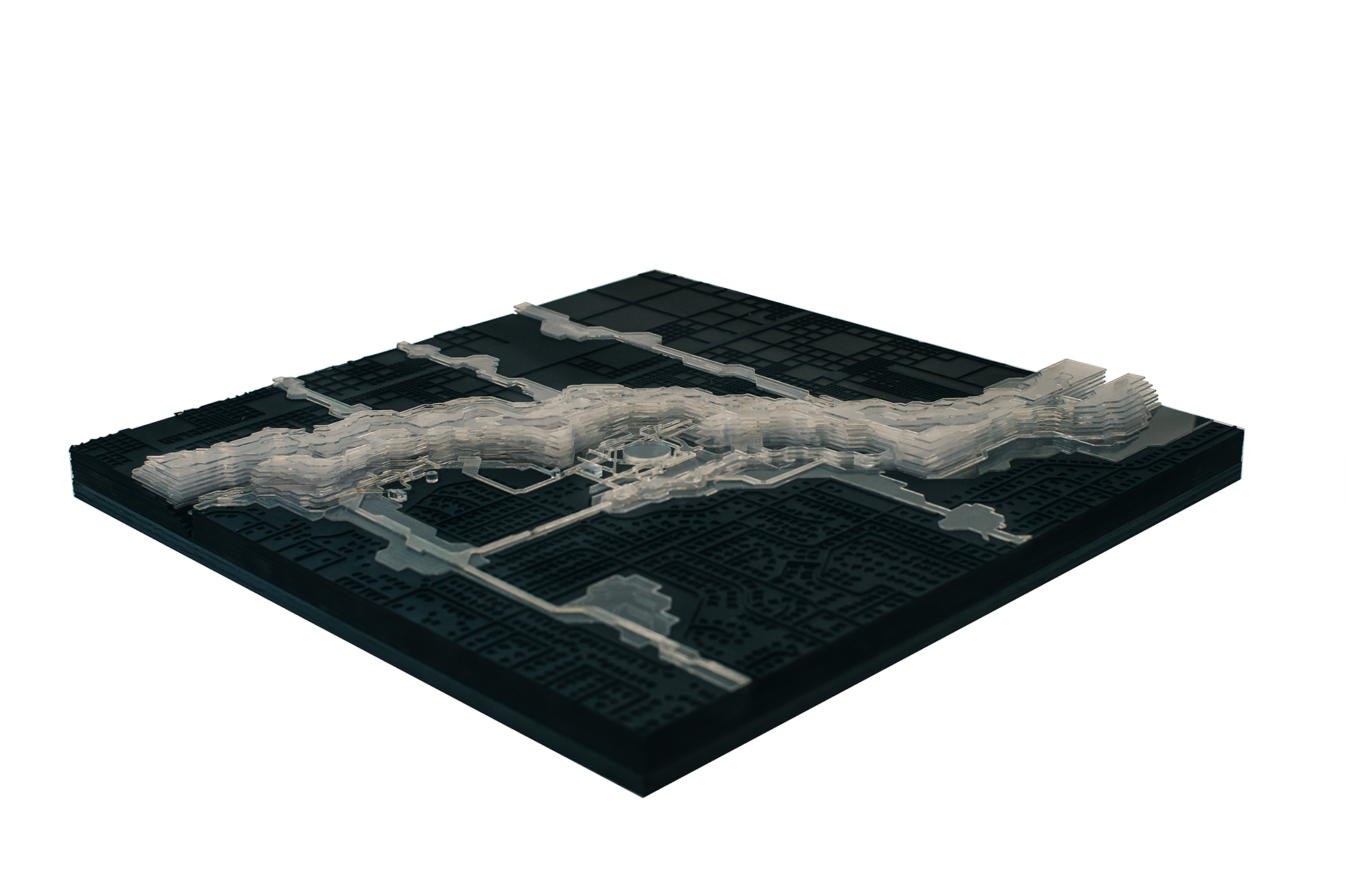

Ultimately, the project slowly turns the landscape into refuges for humans and non-human species. Agricultural production is no longer seen as mere extraction, but as transformative opposition to climatic disruption.
Through a strategy of circular systems, usage of new materials and additive manufacturing, the project redefines the interrelations of production and disposal. Extraction is counteracted with regeneration and gives birth to a new environmental morphogenesis.
